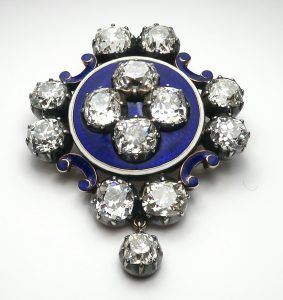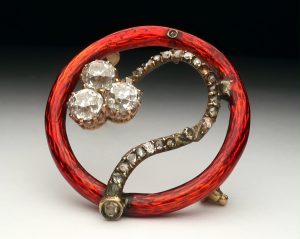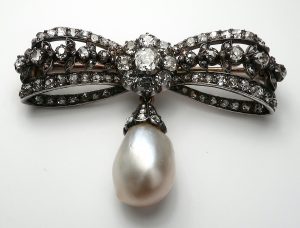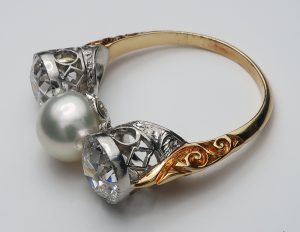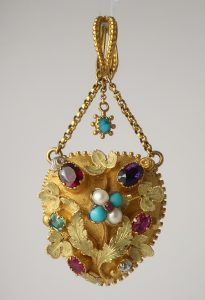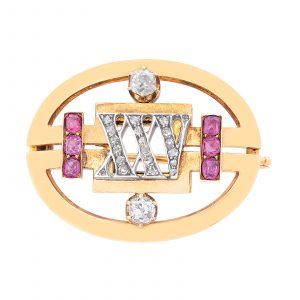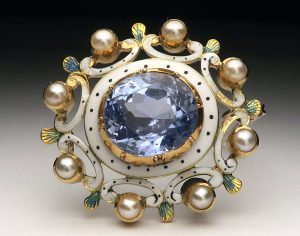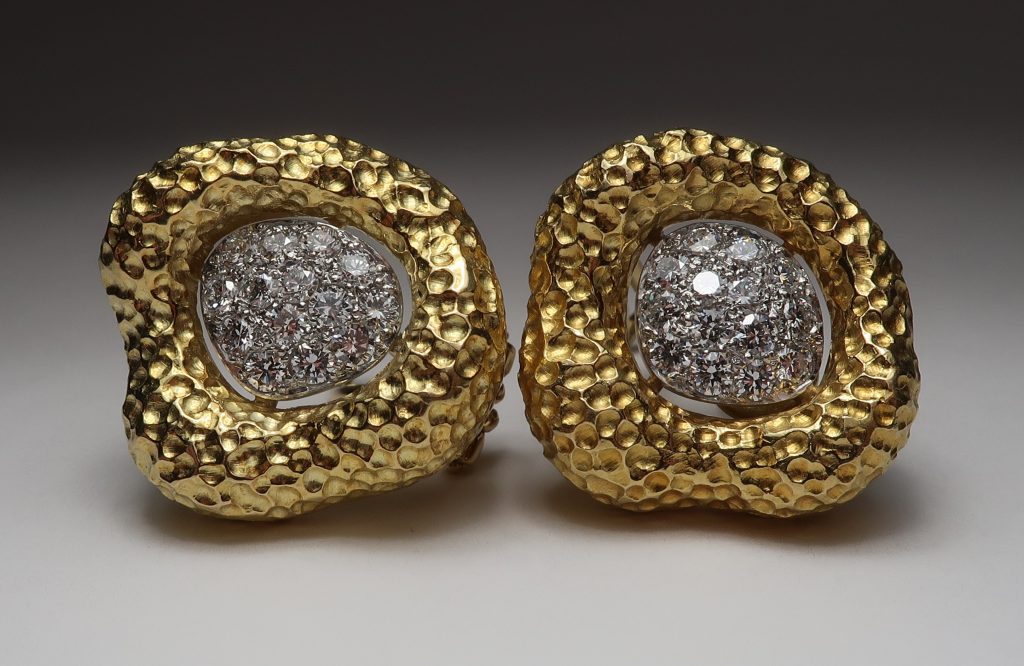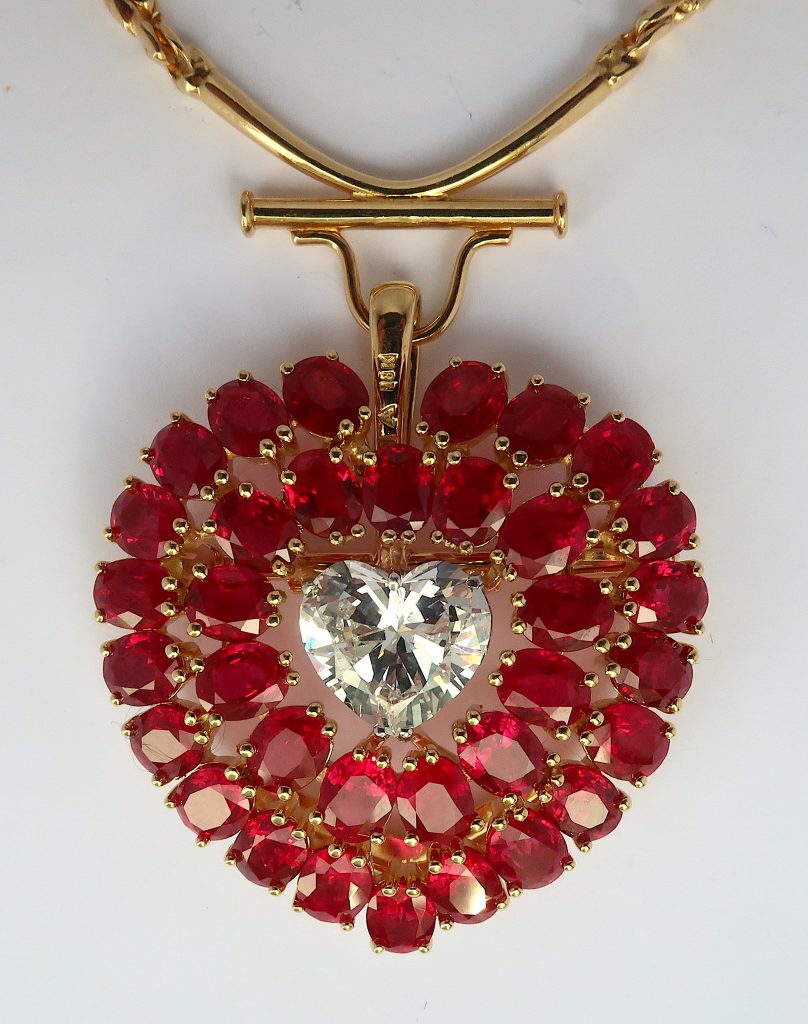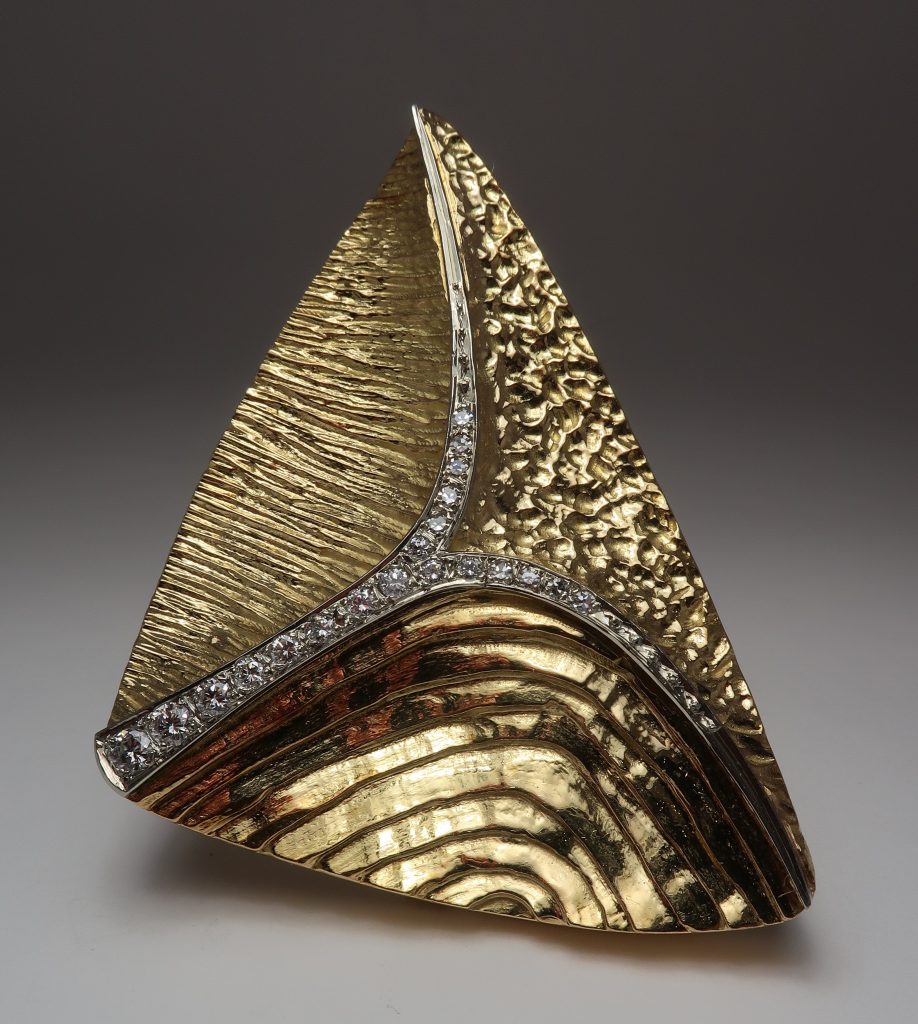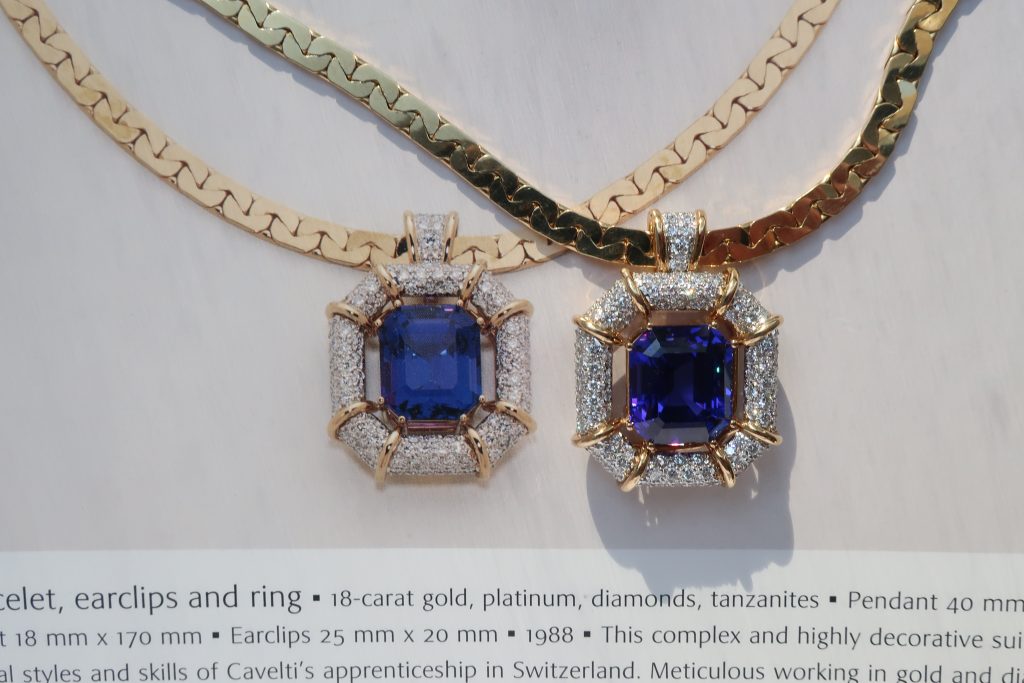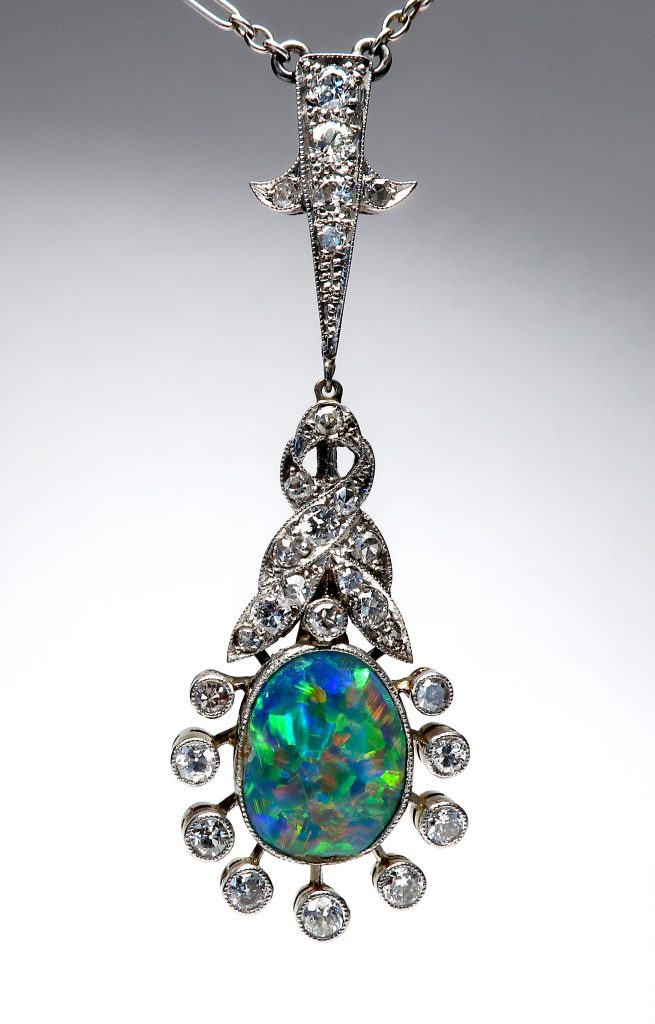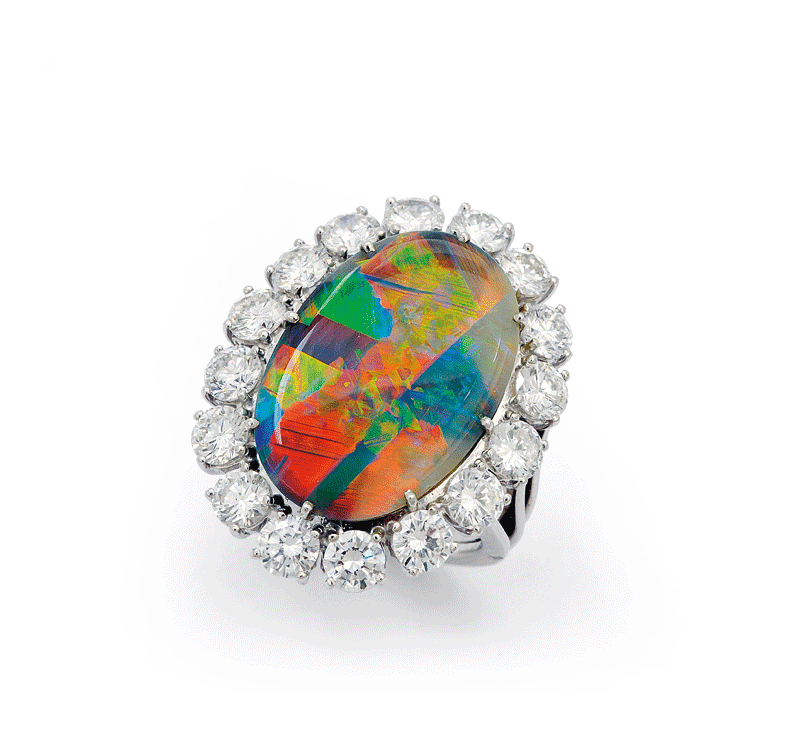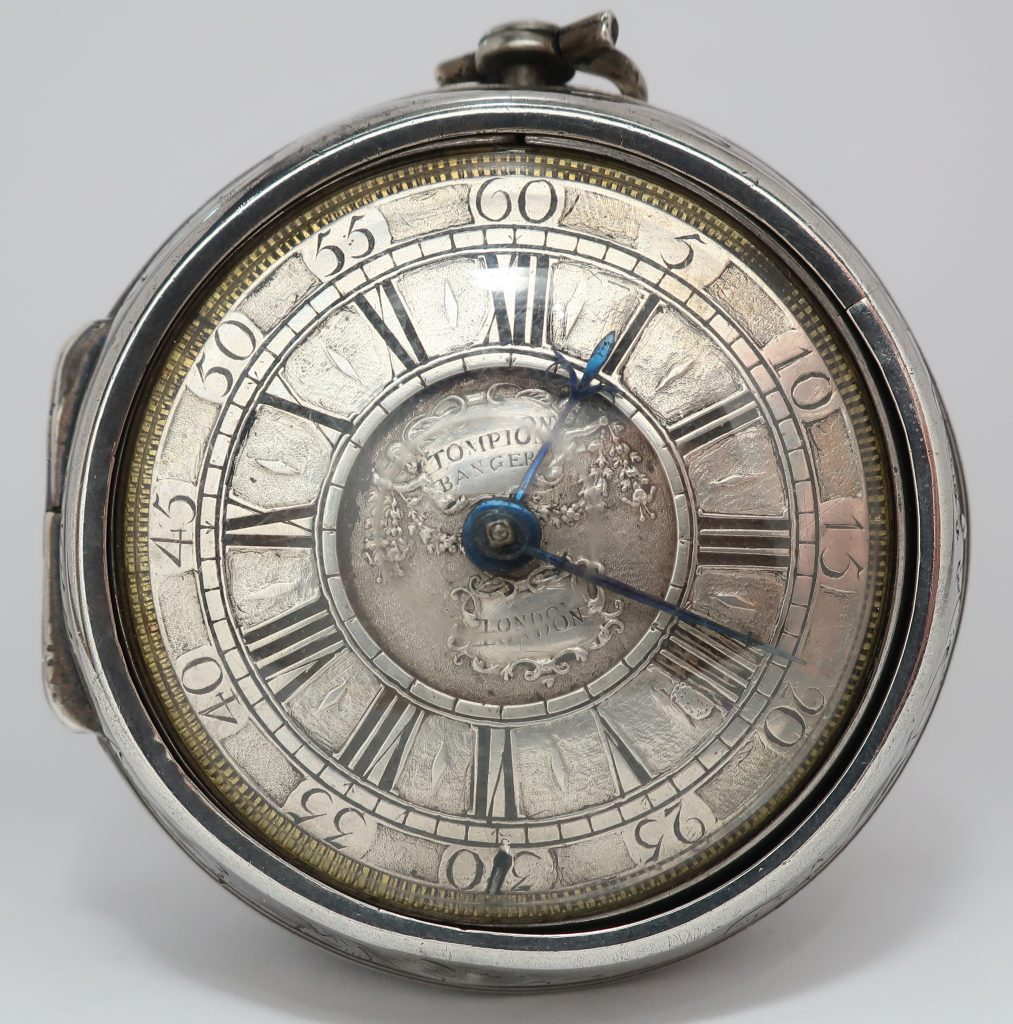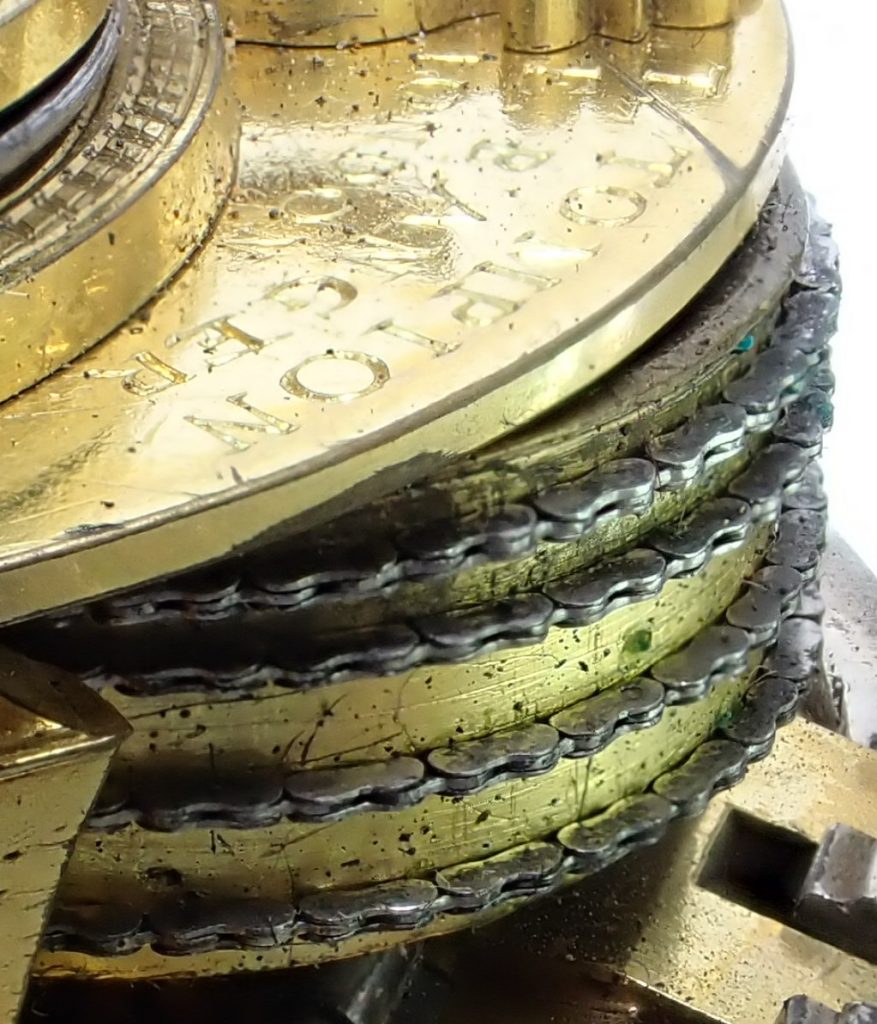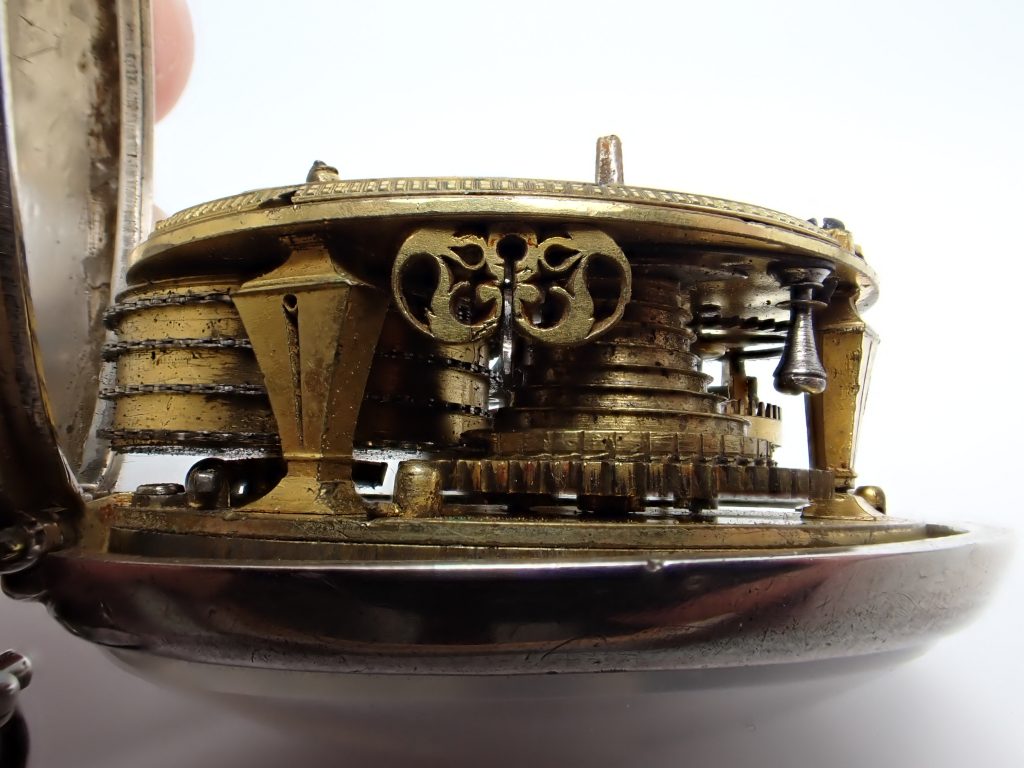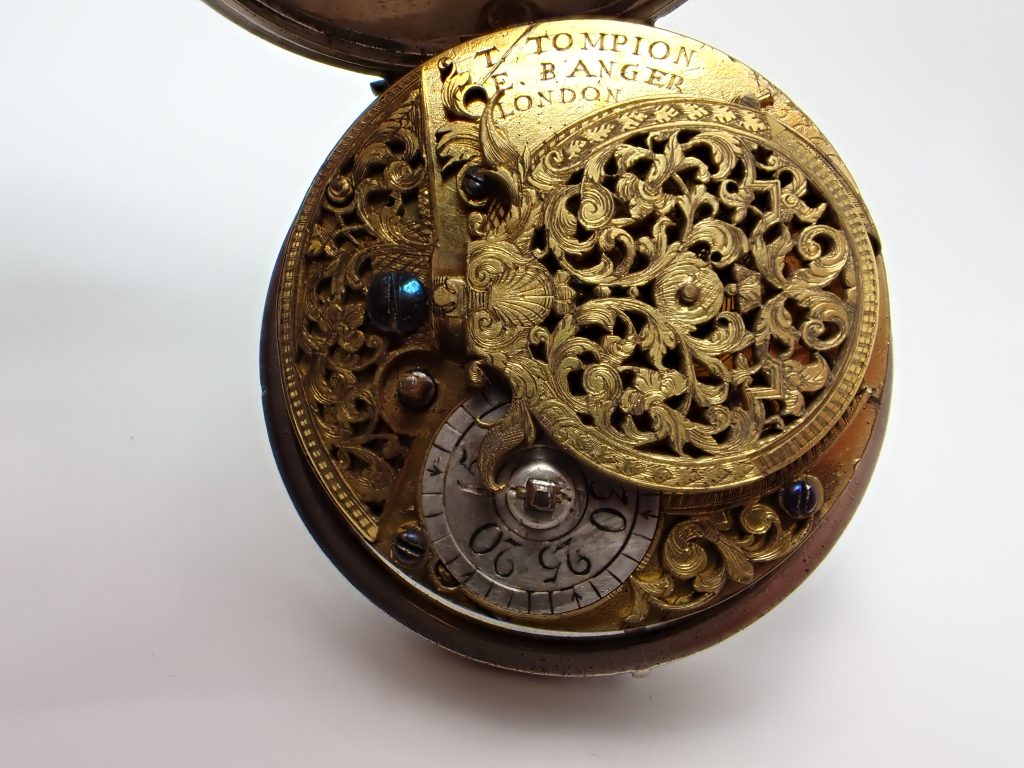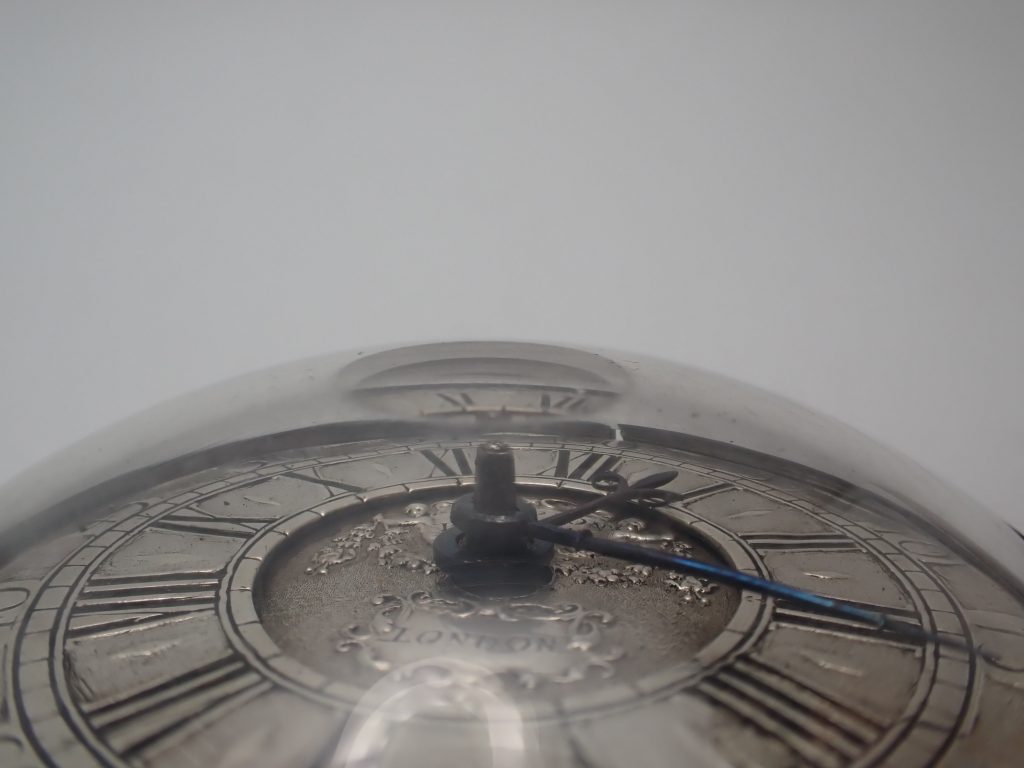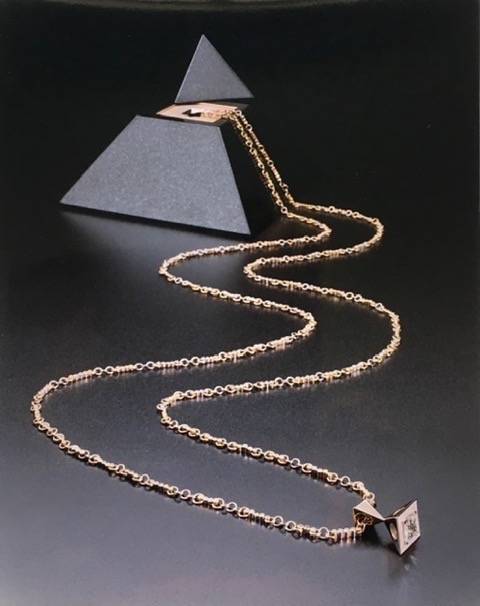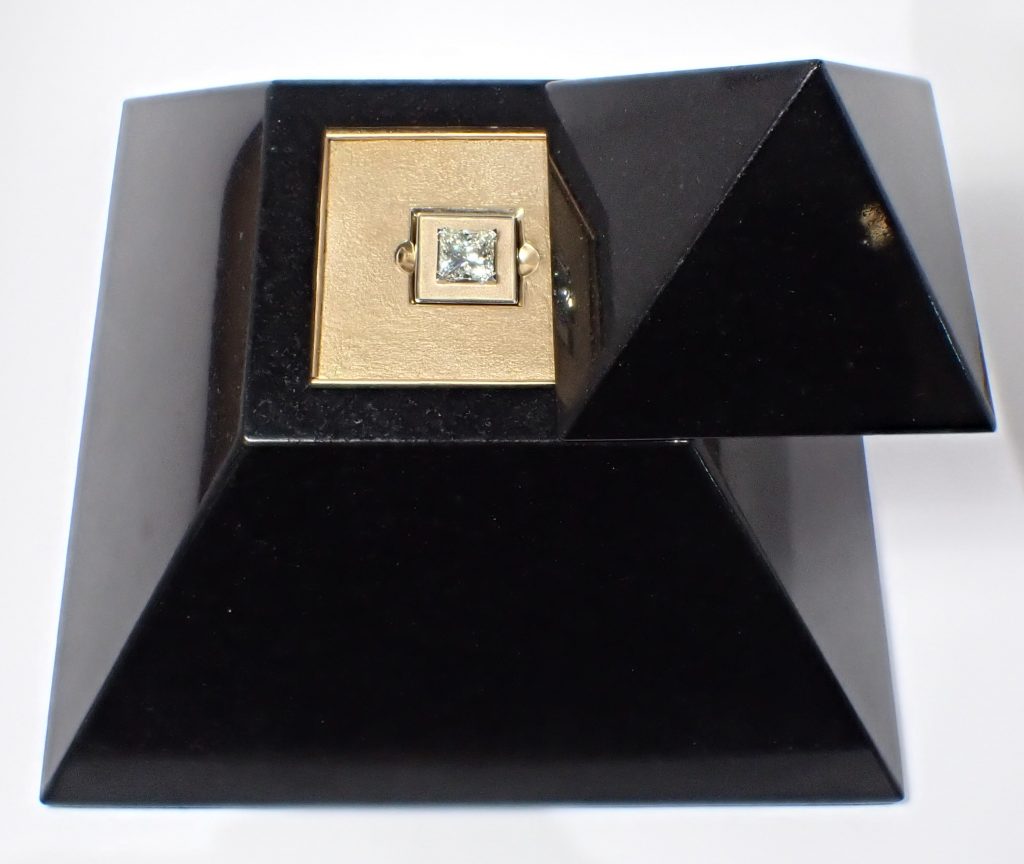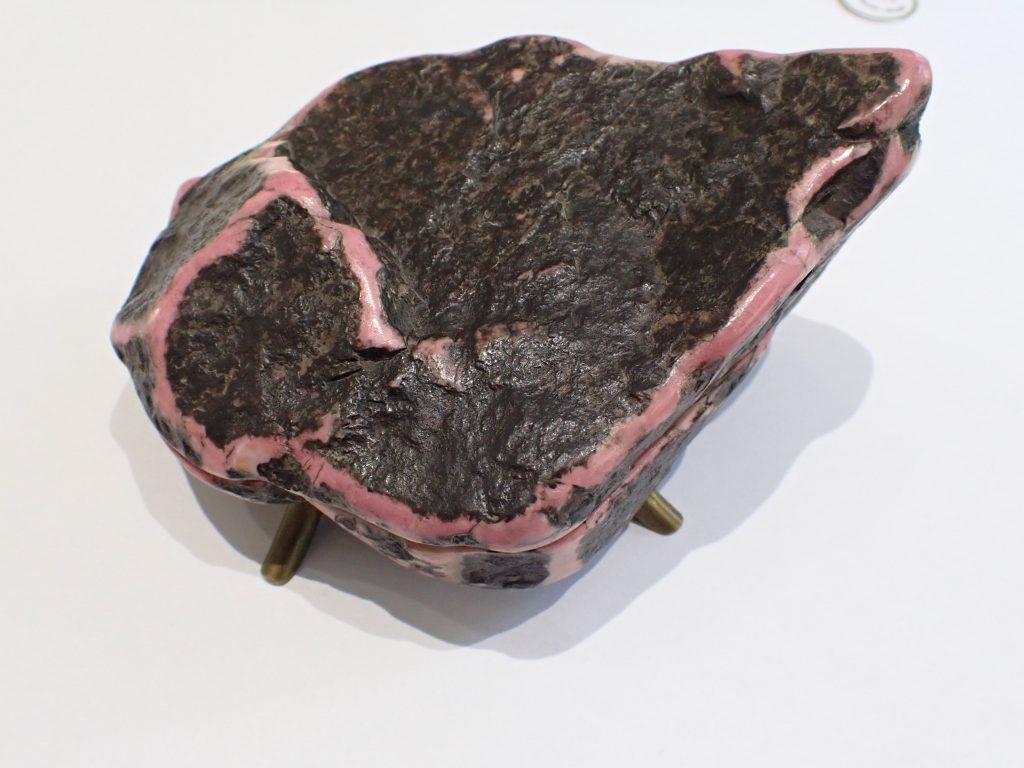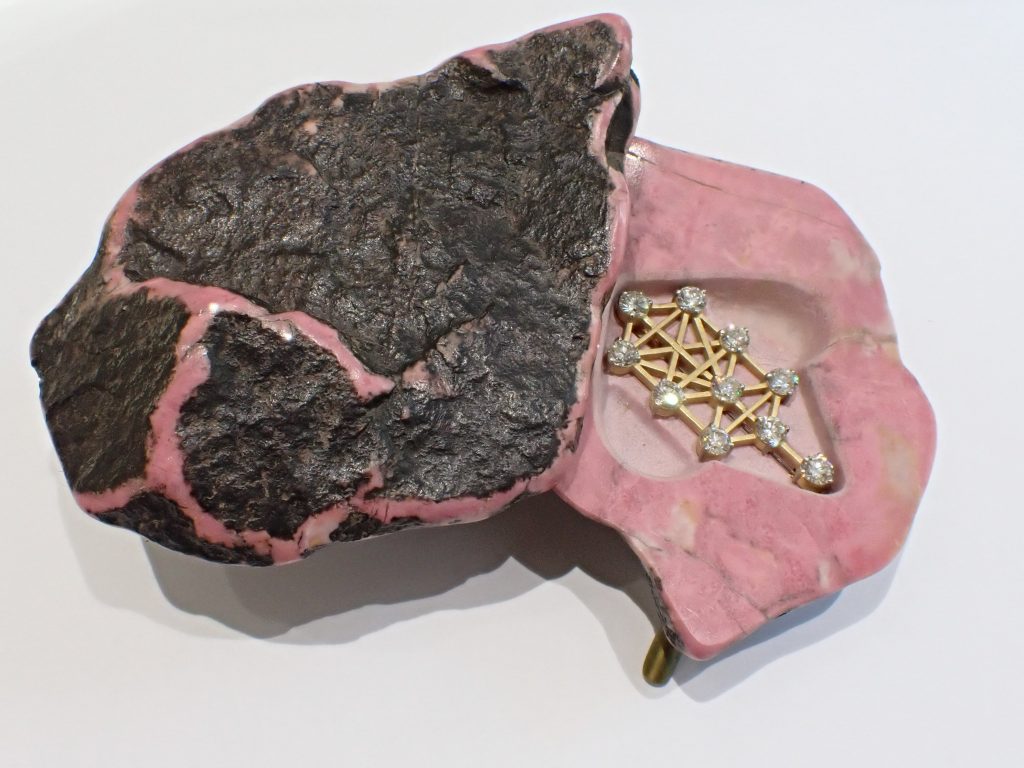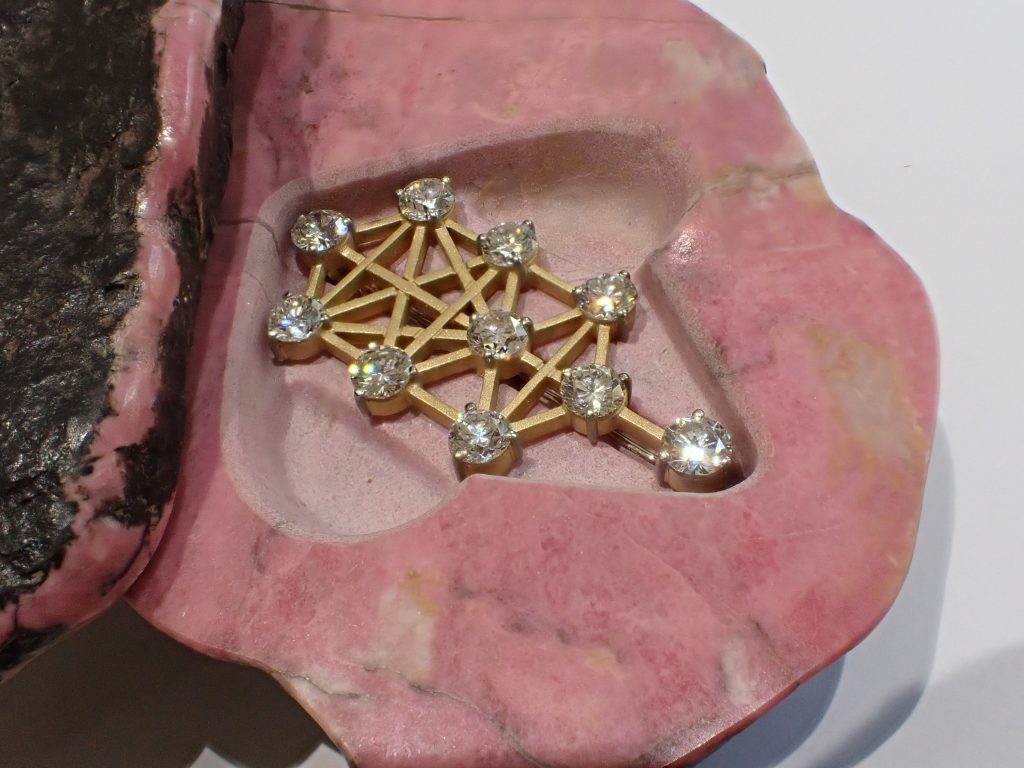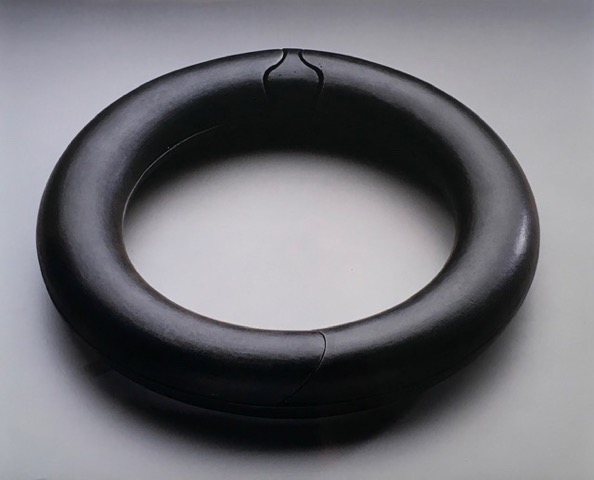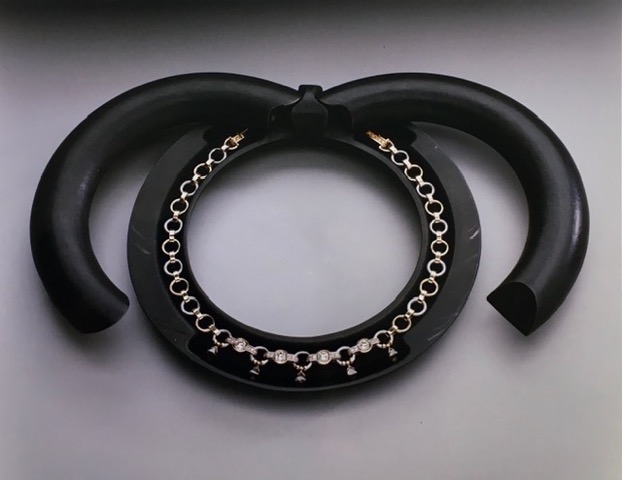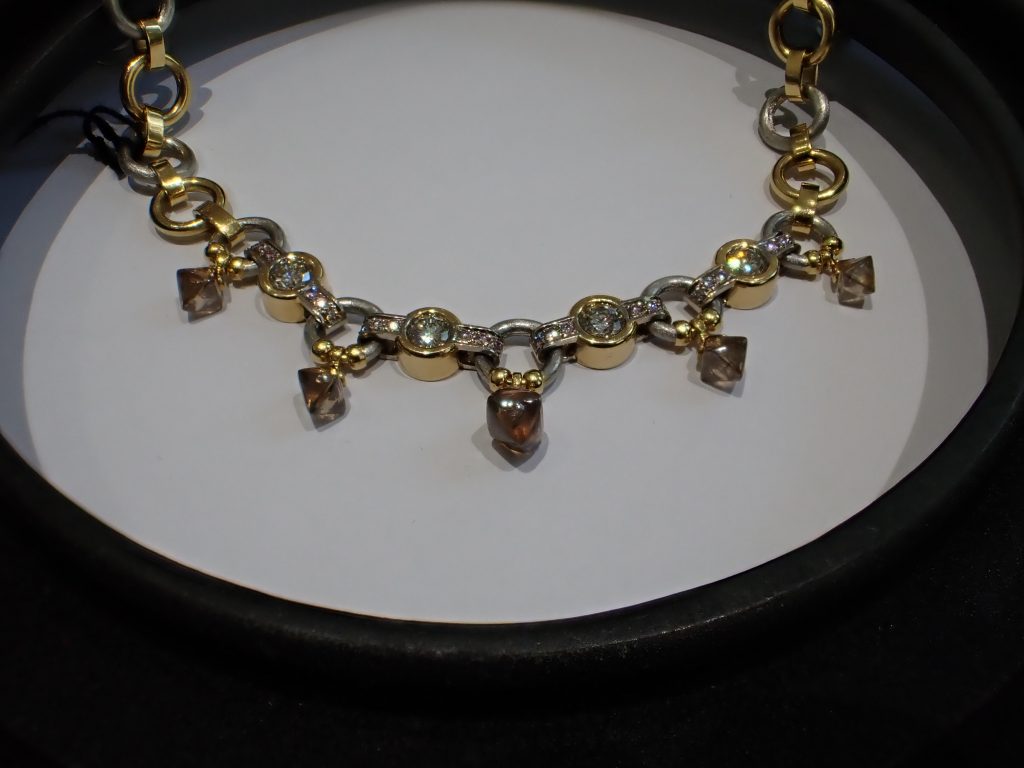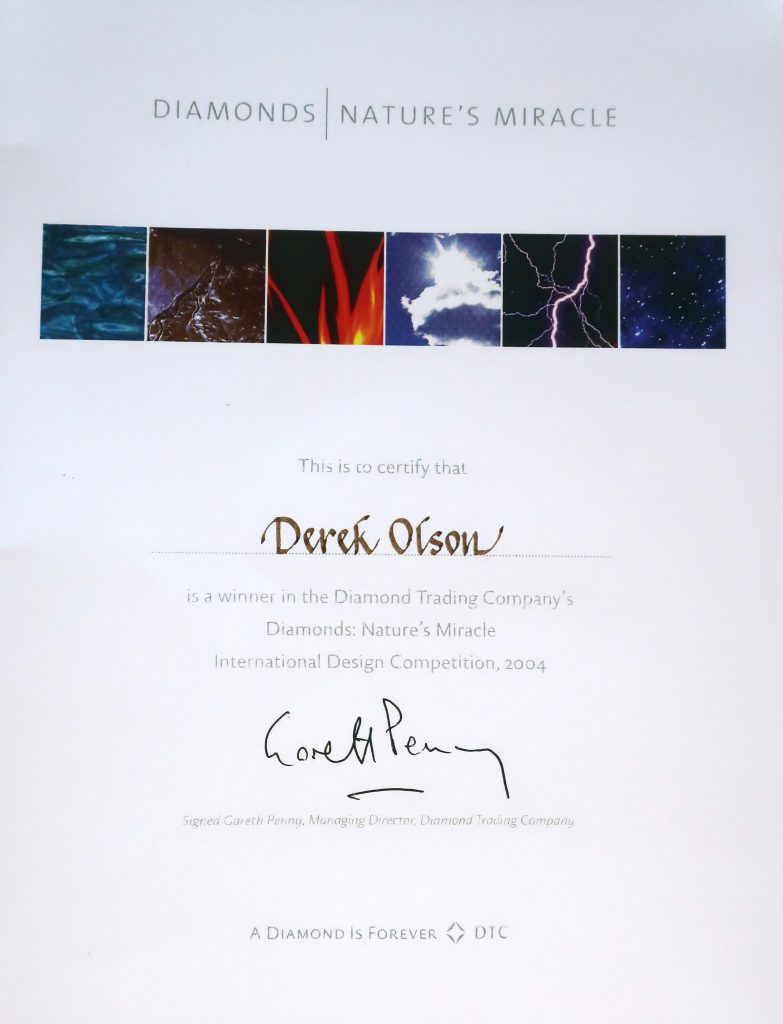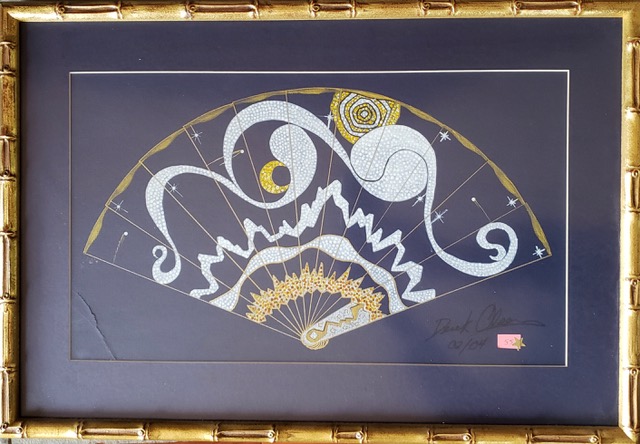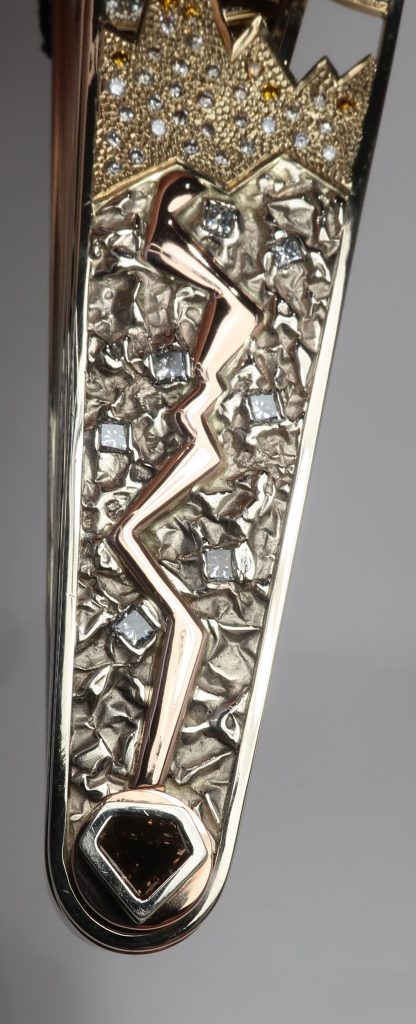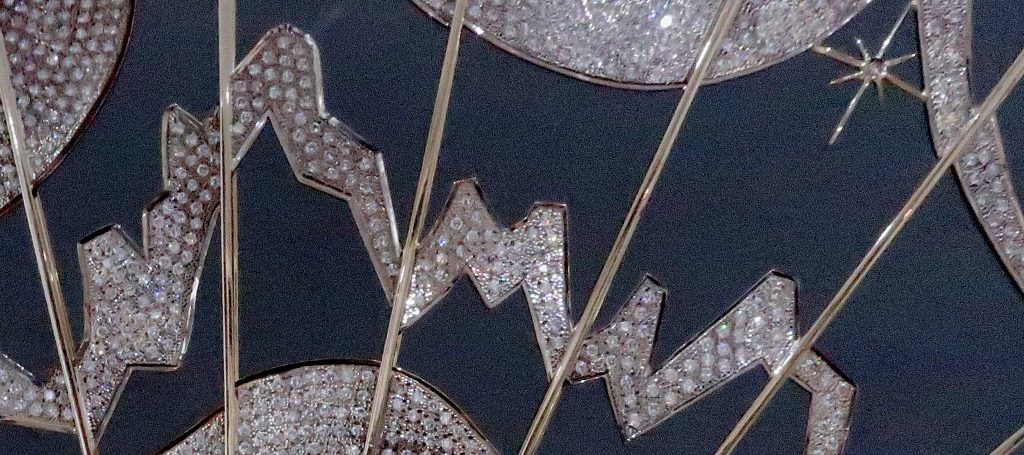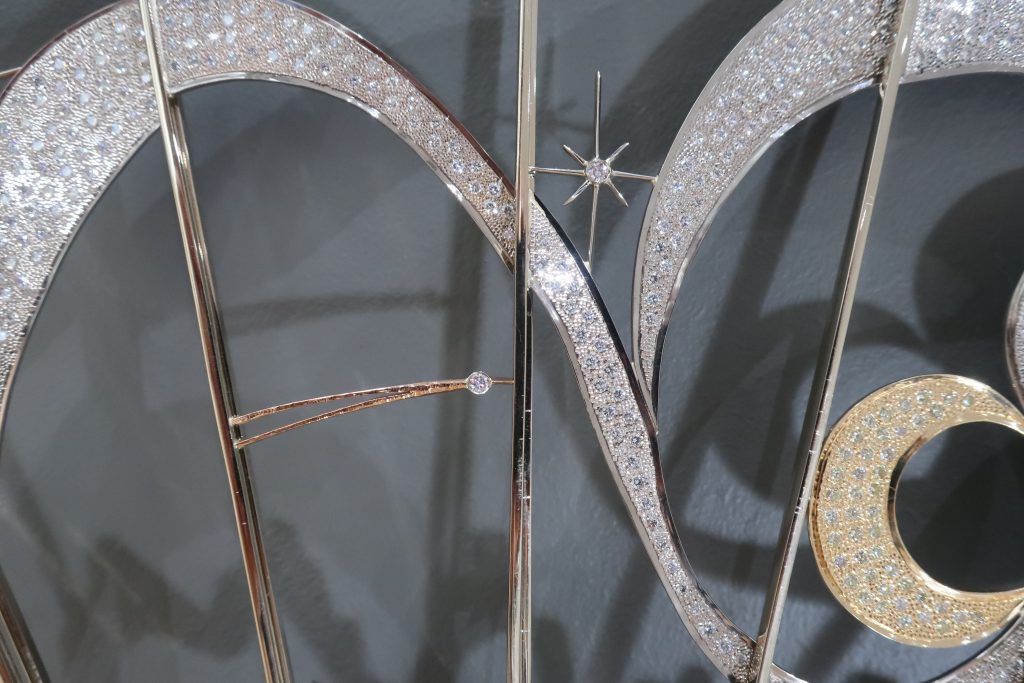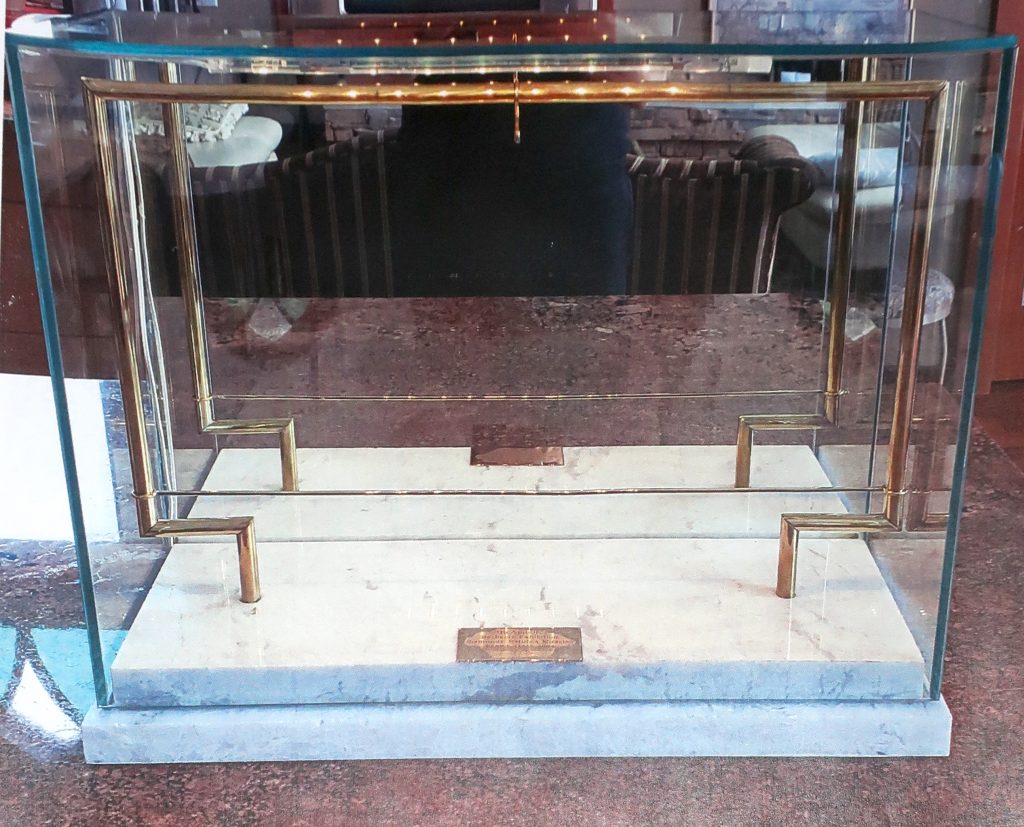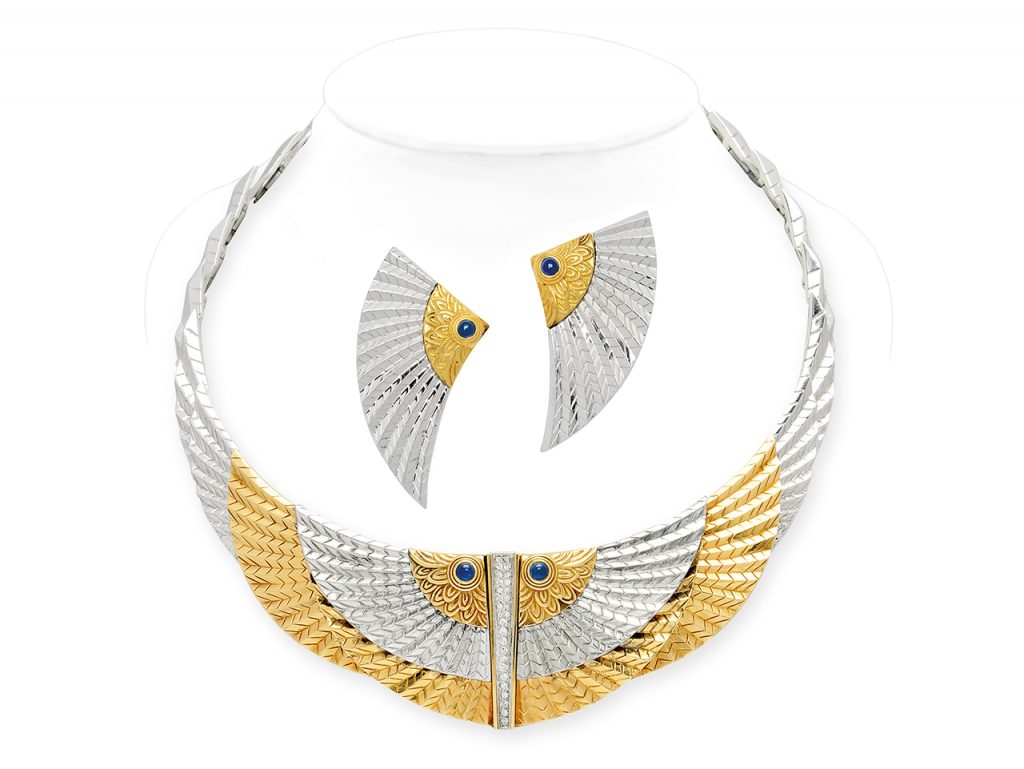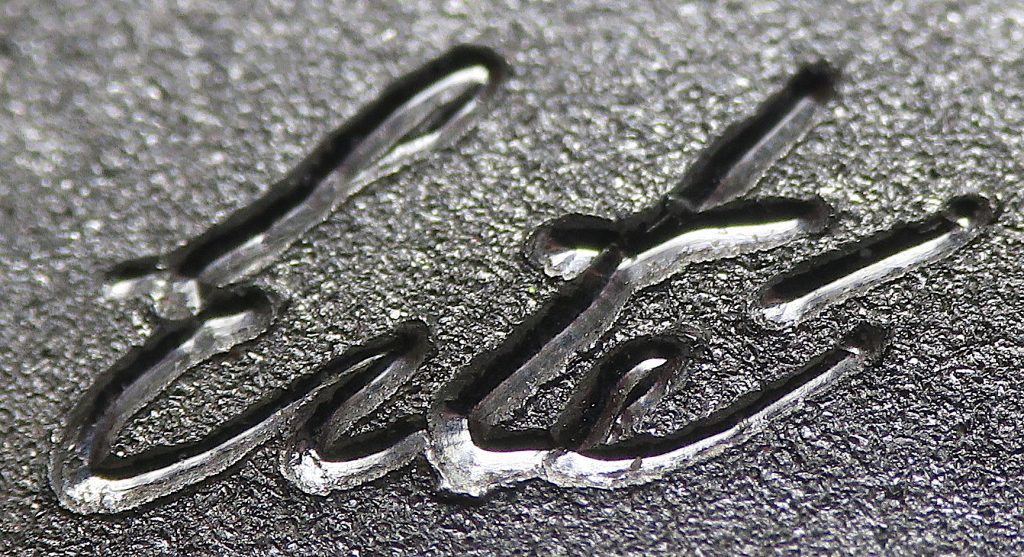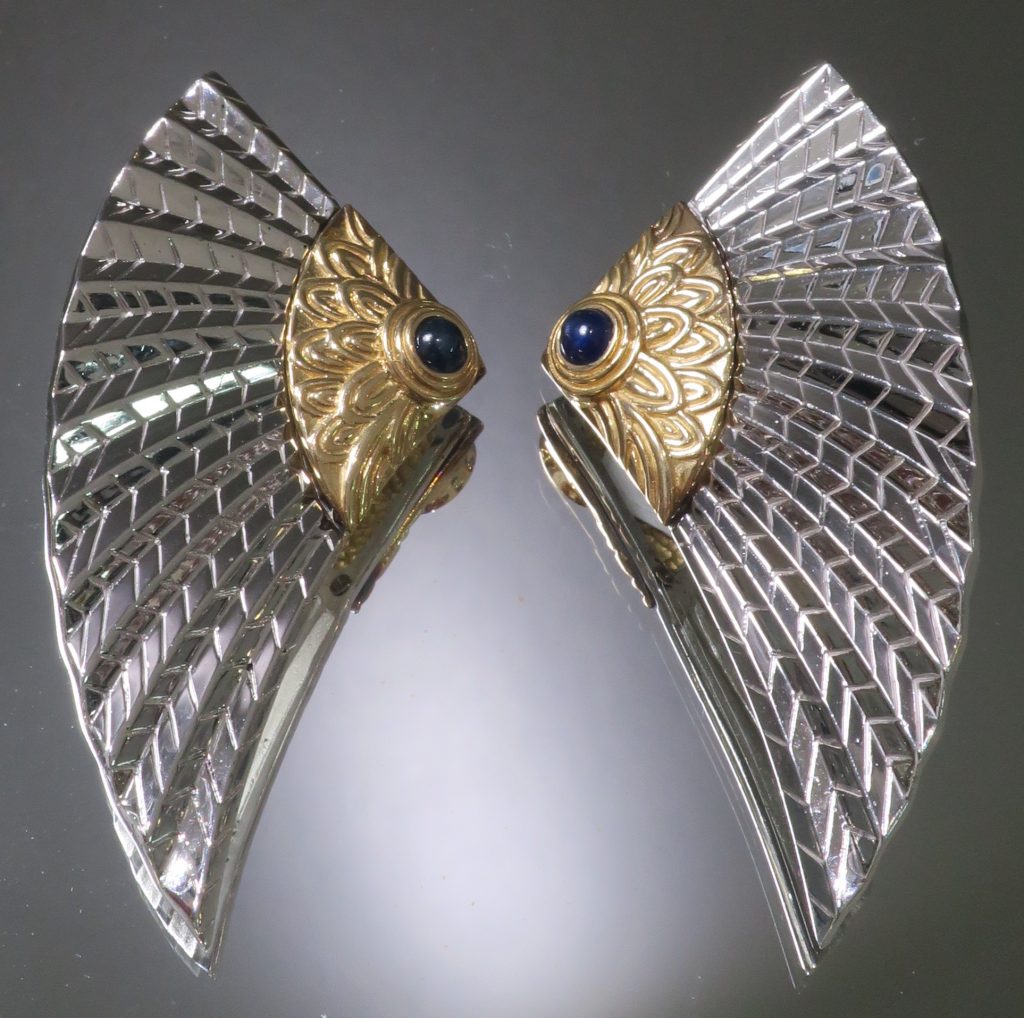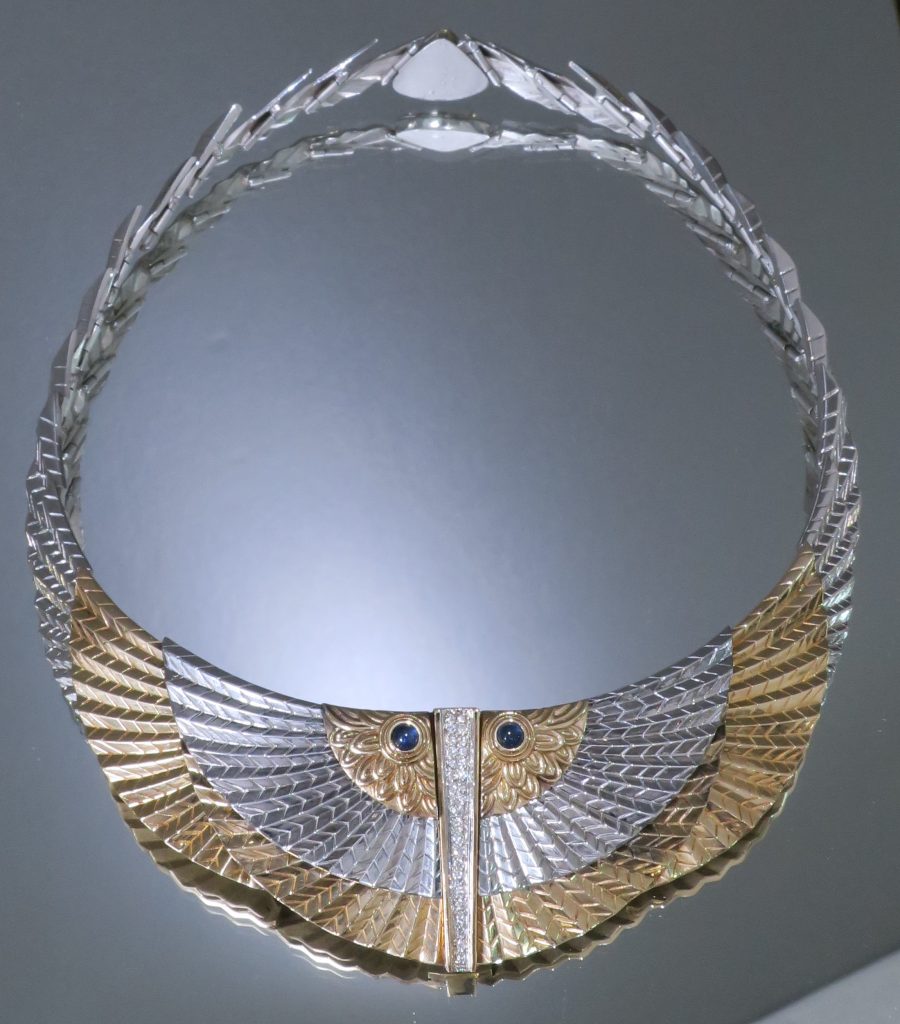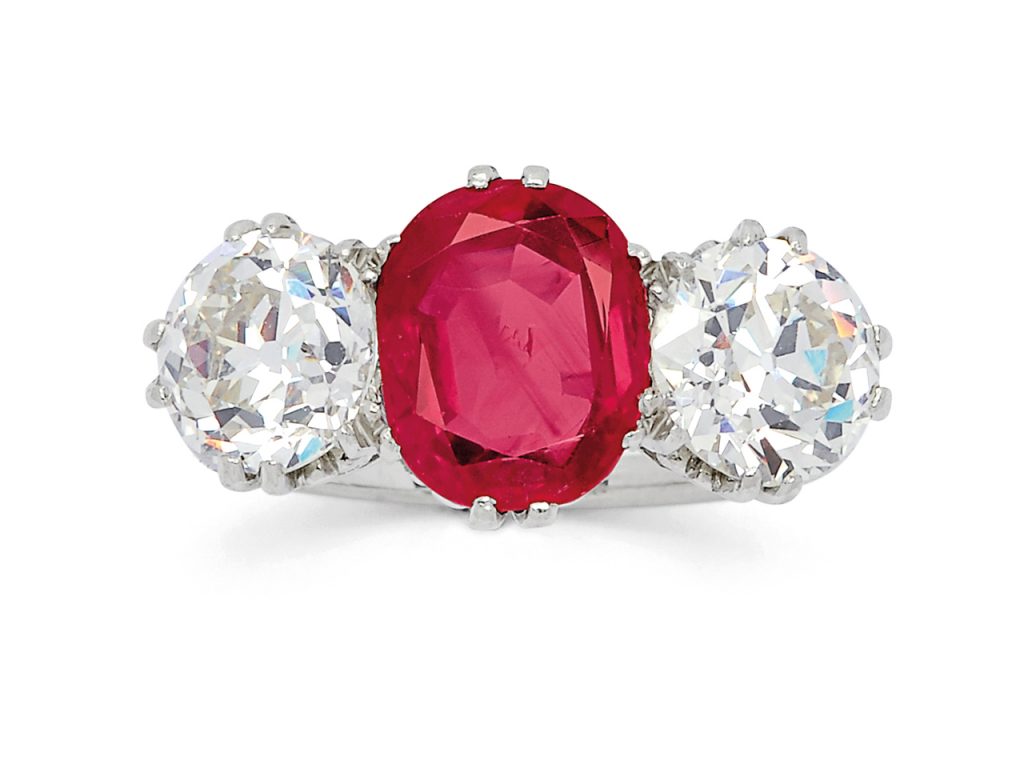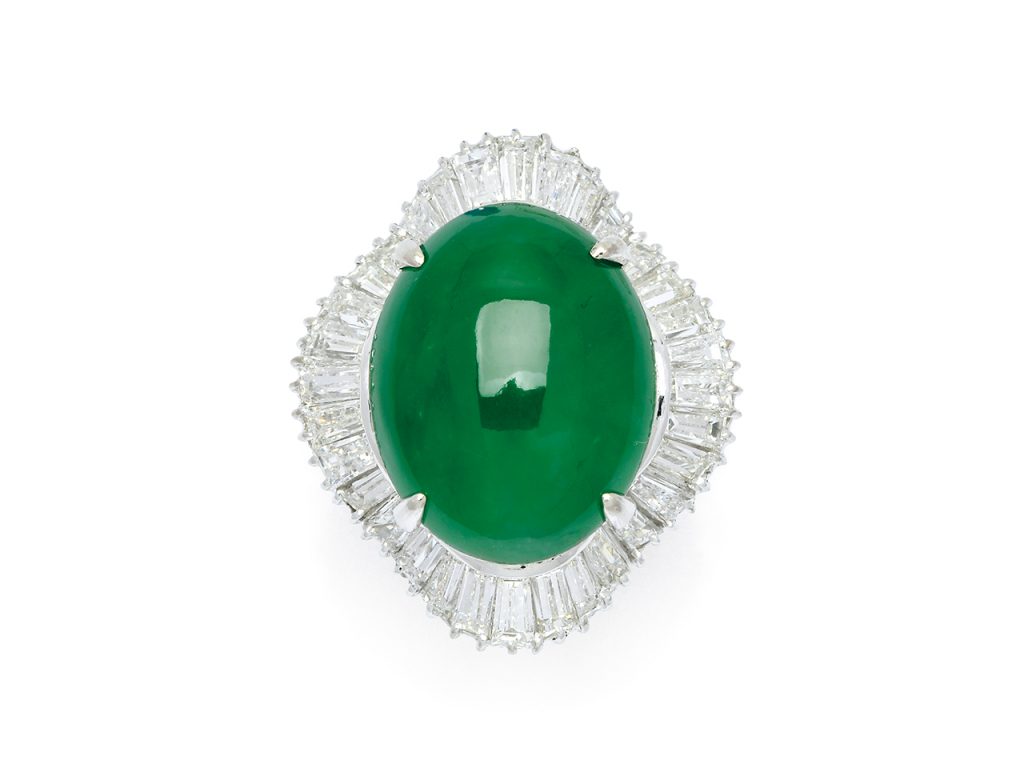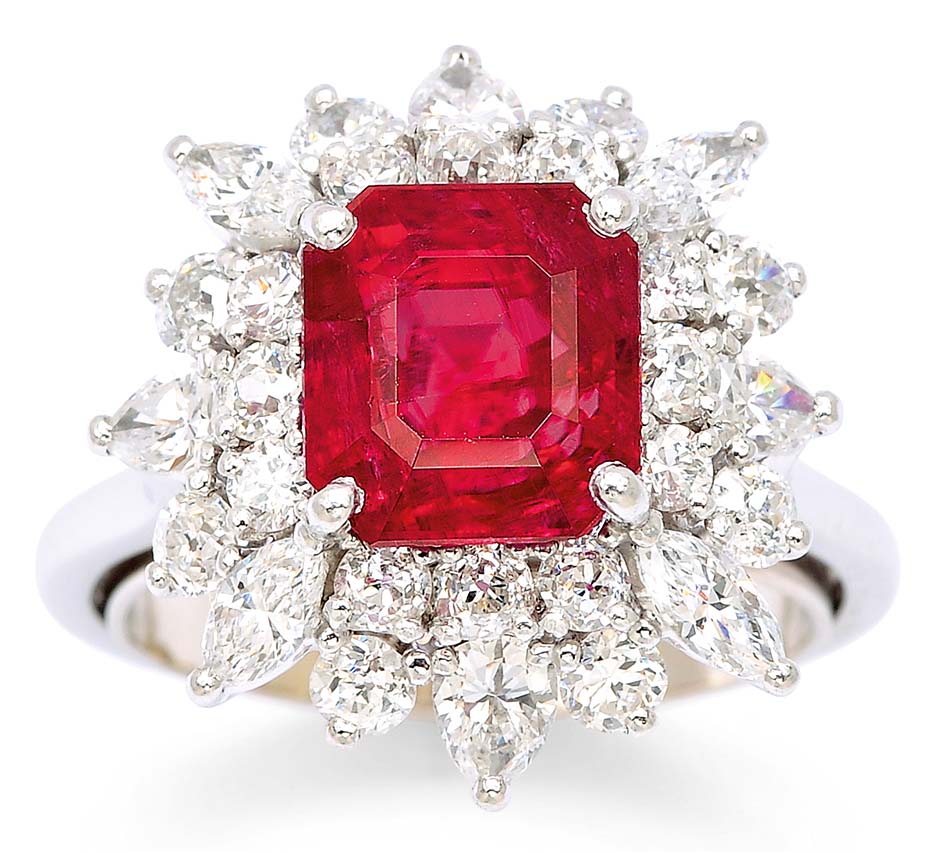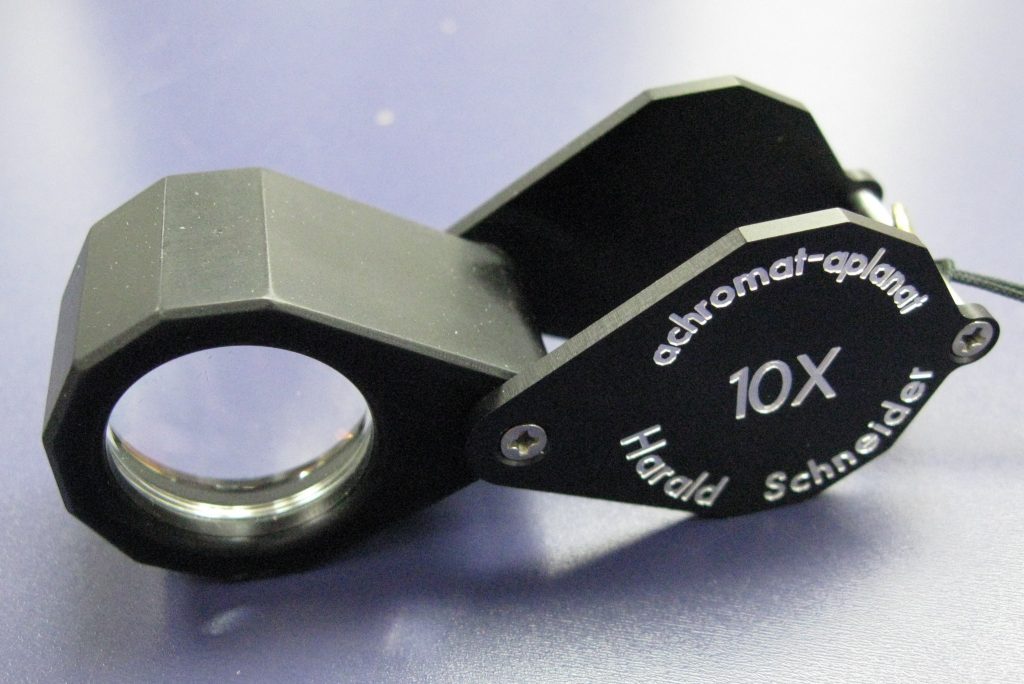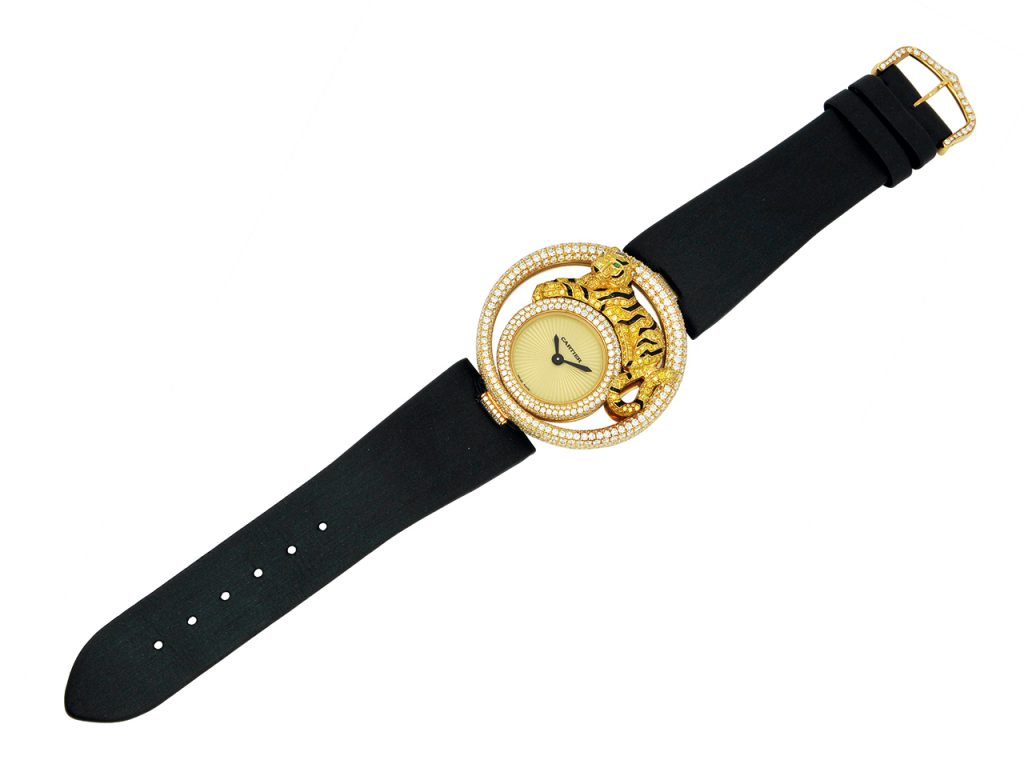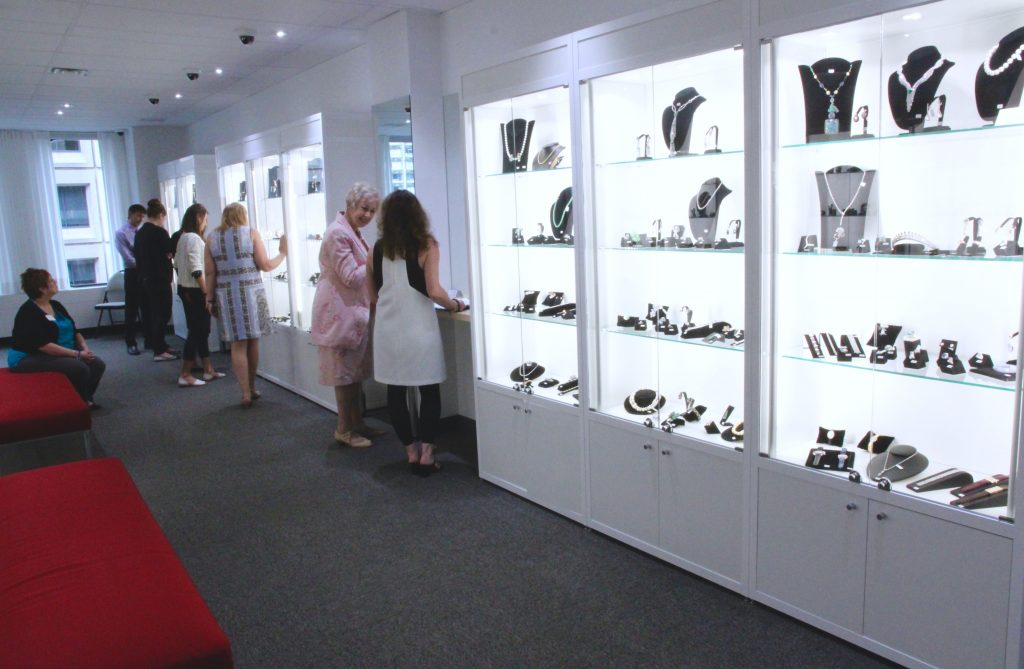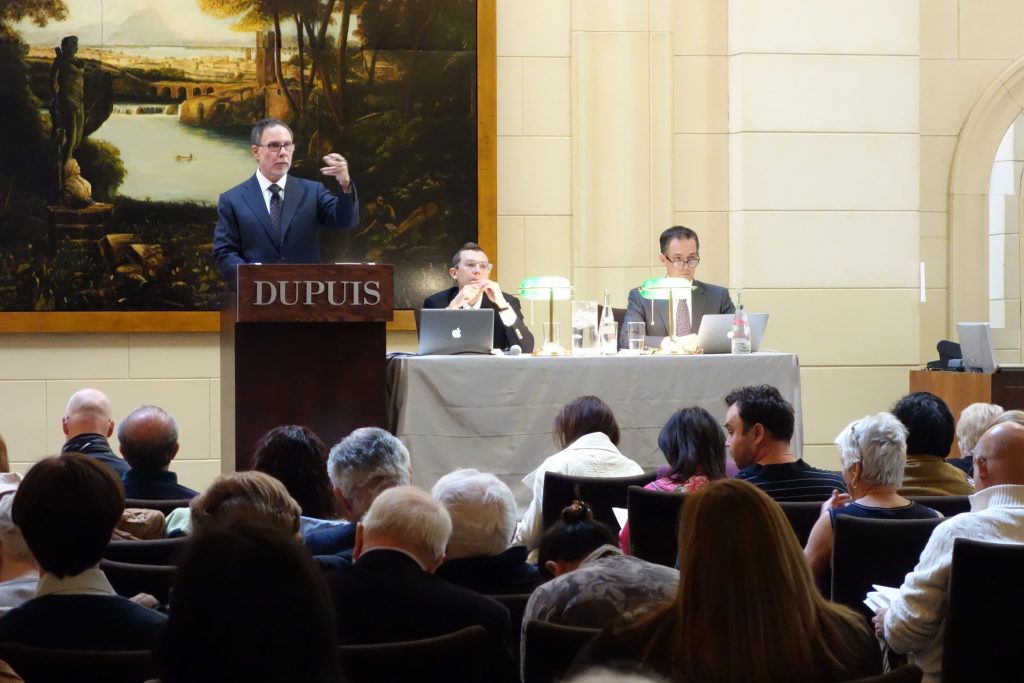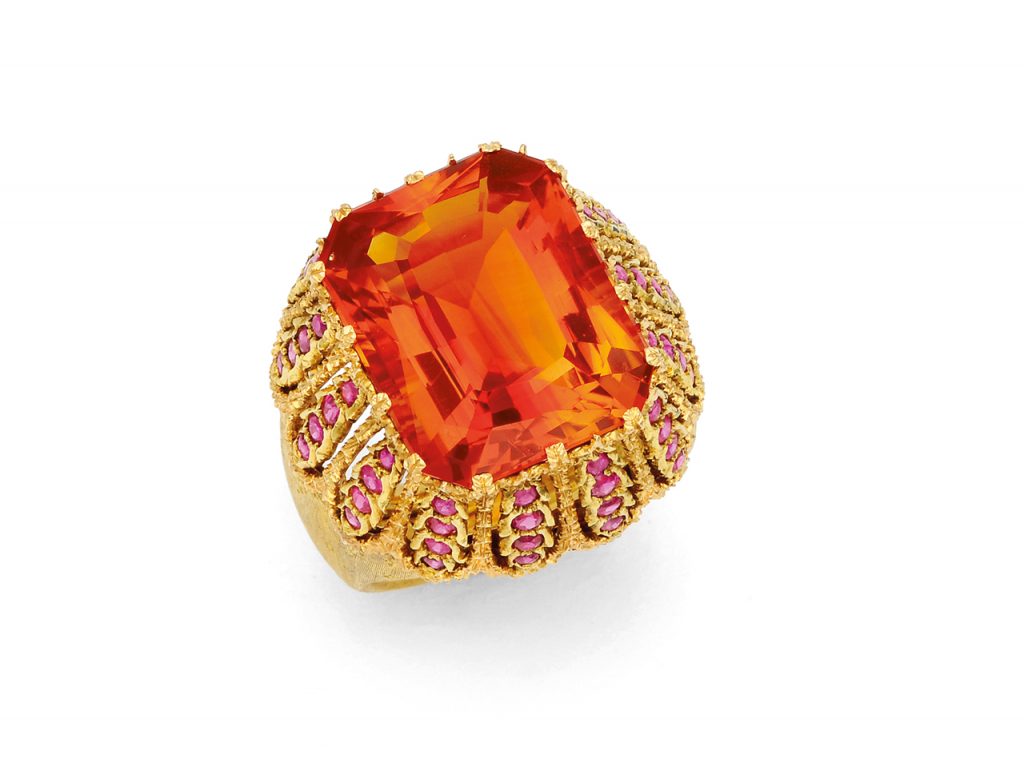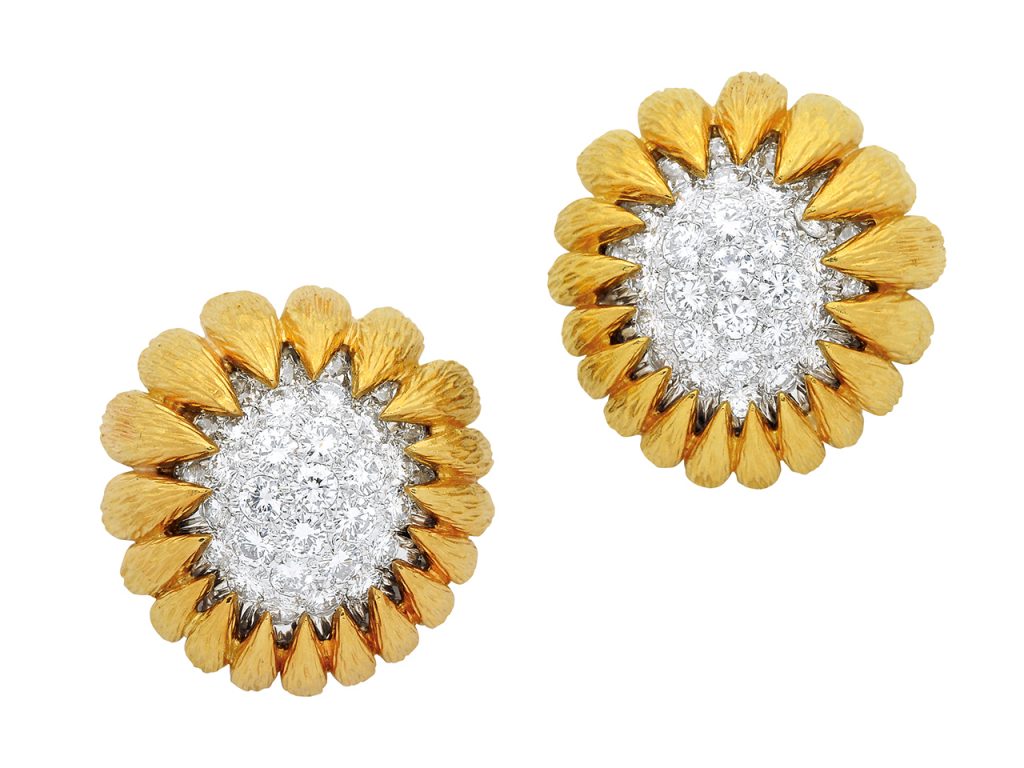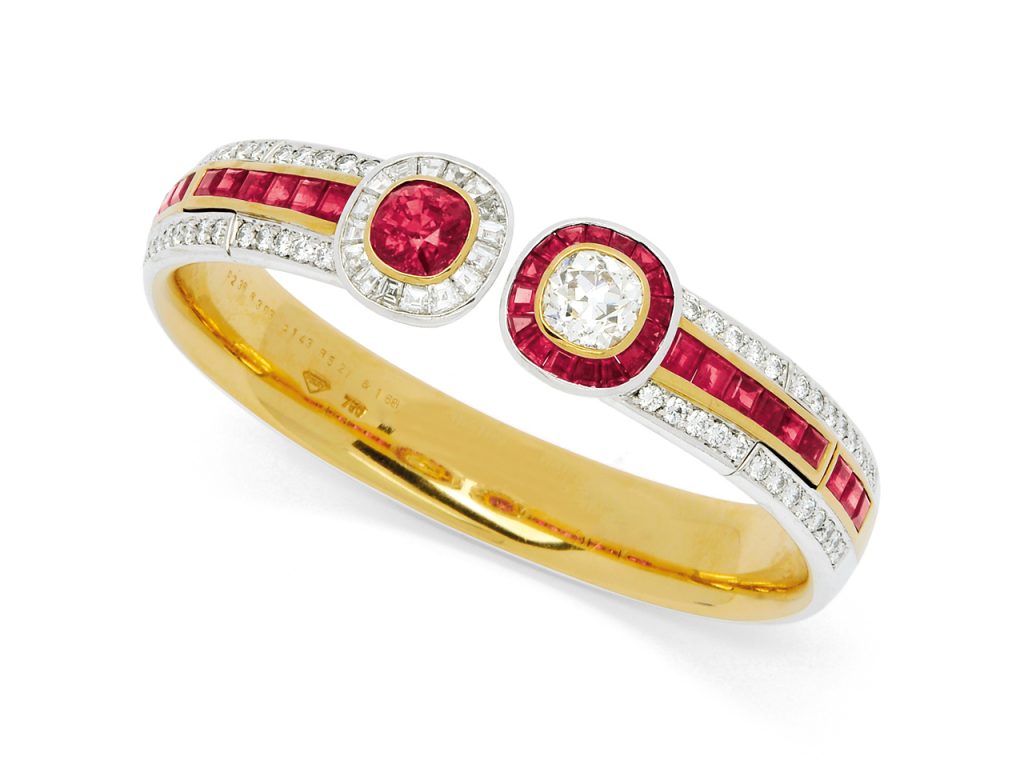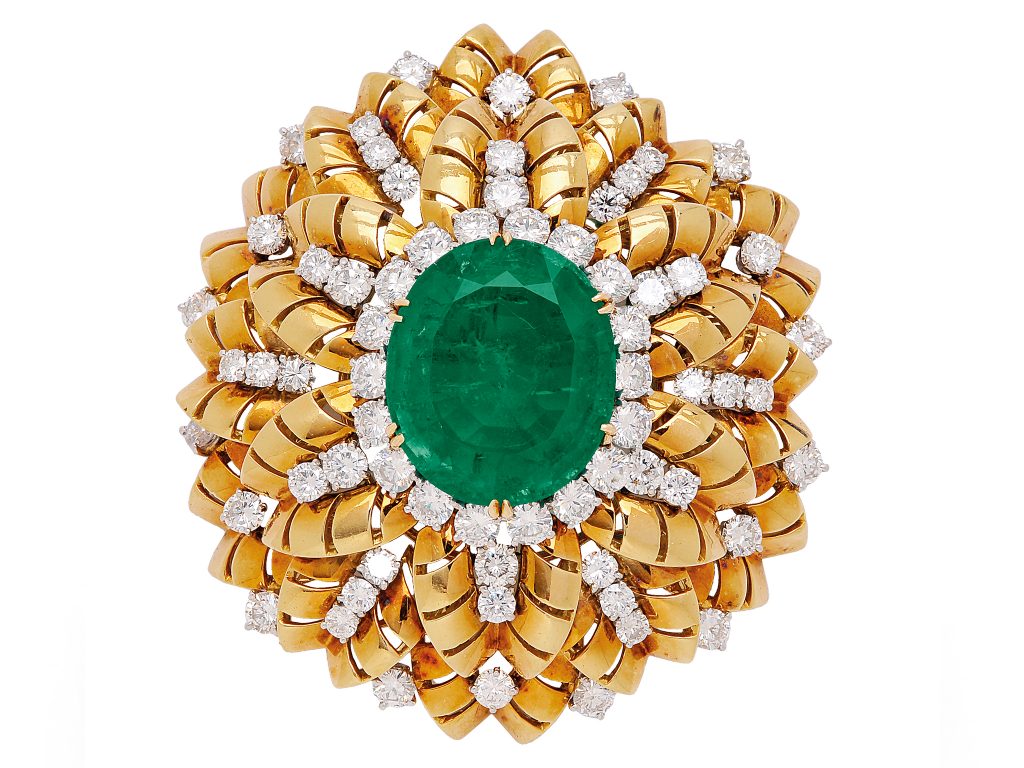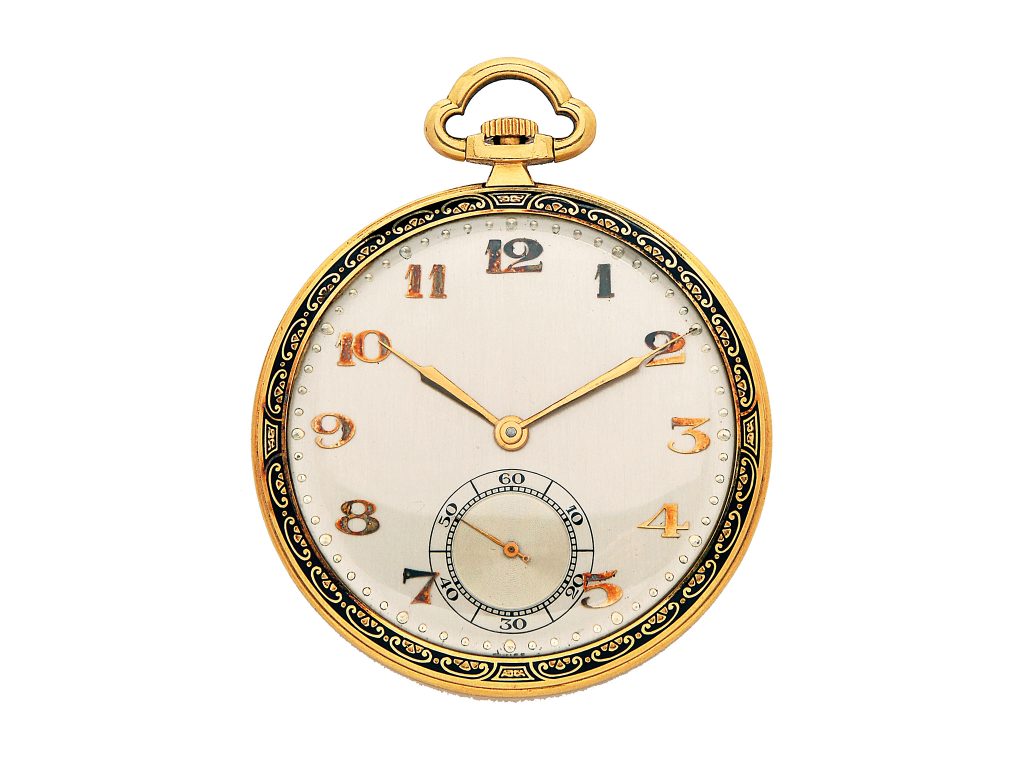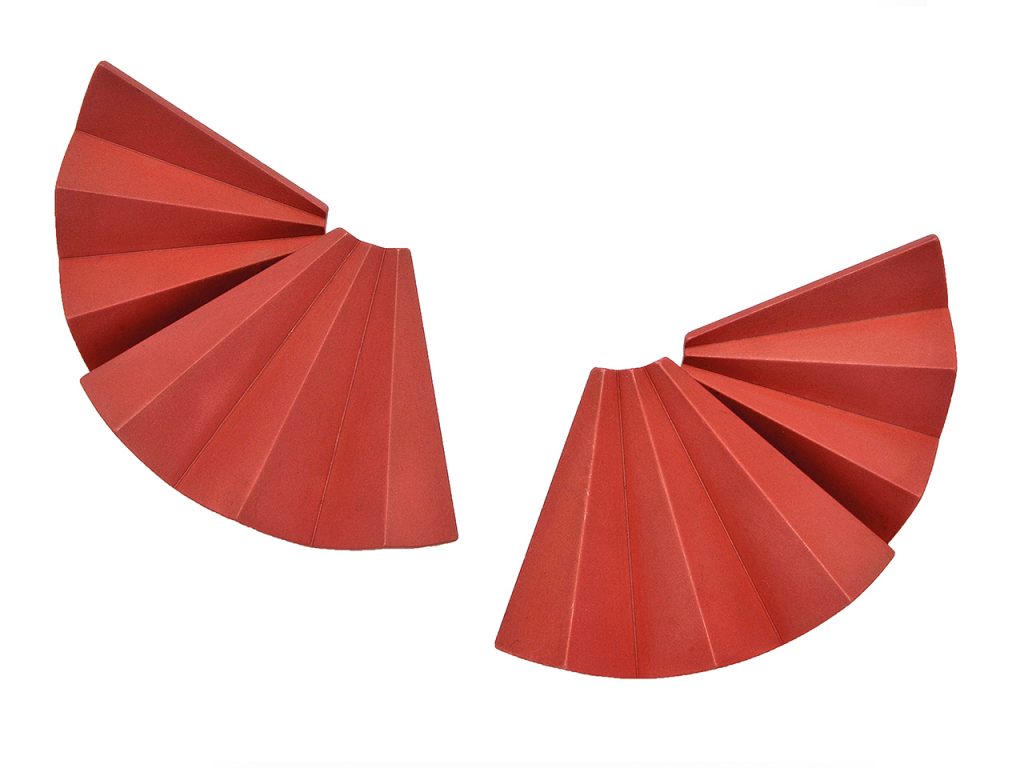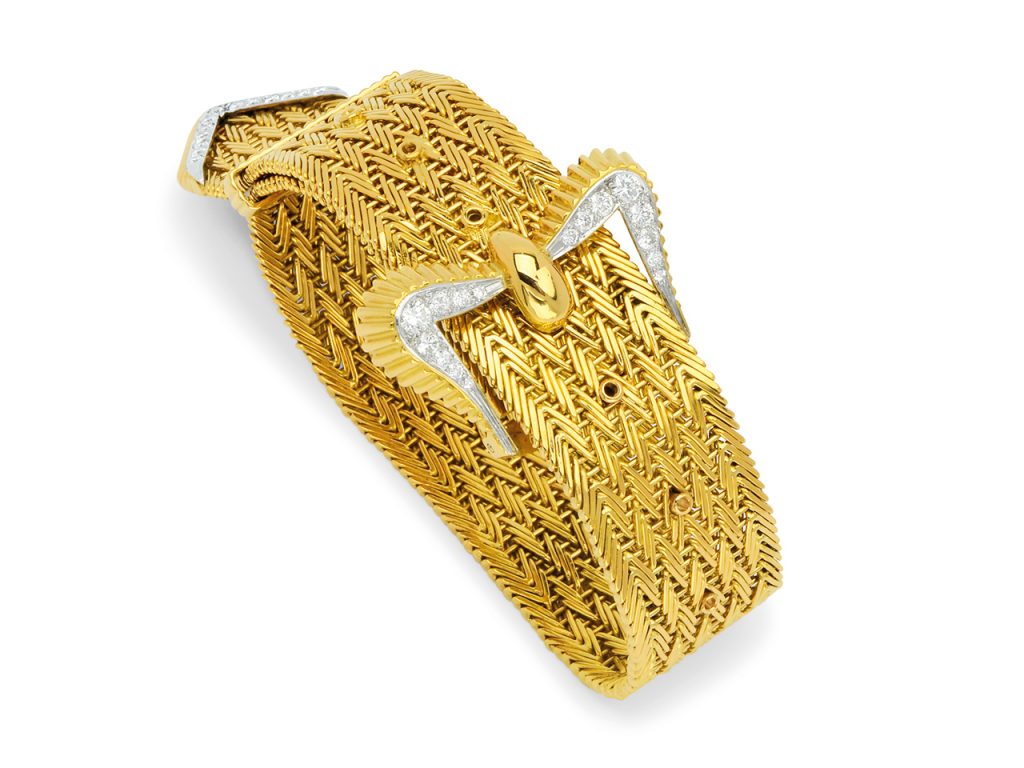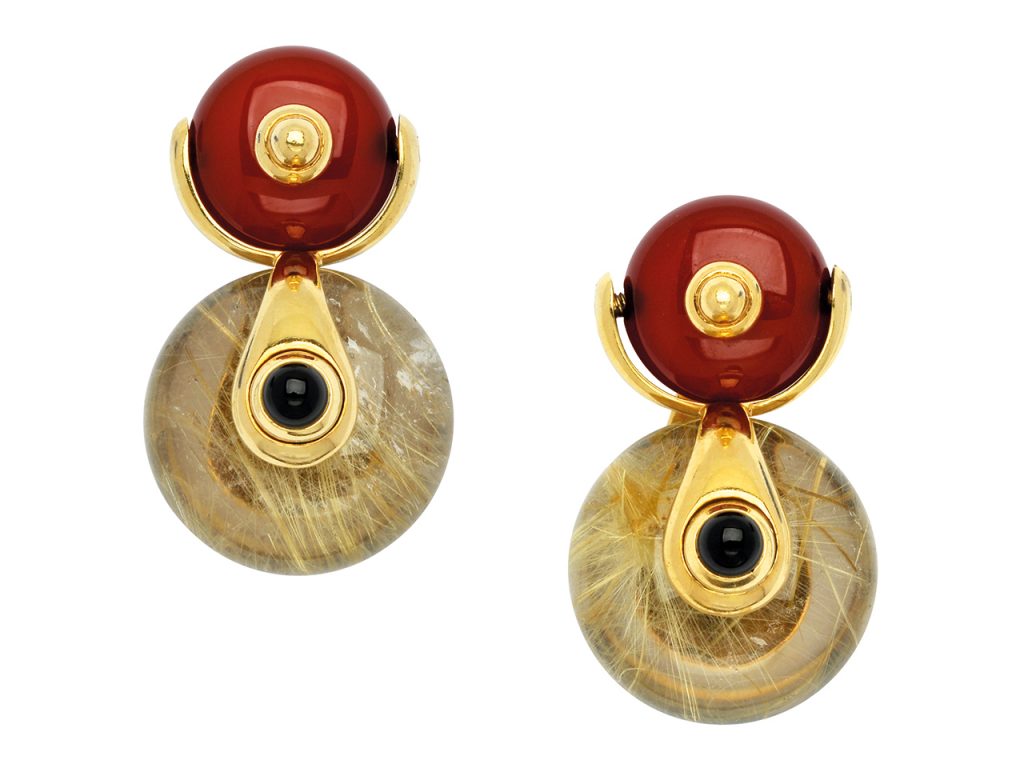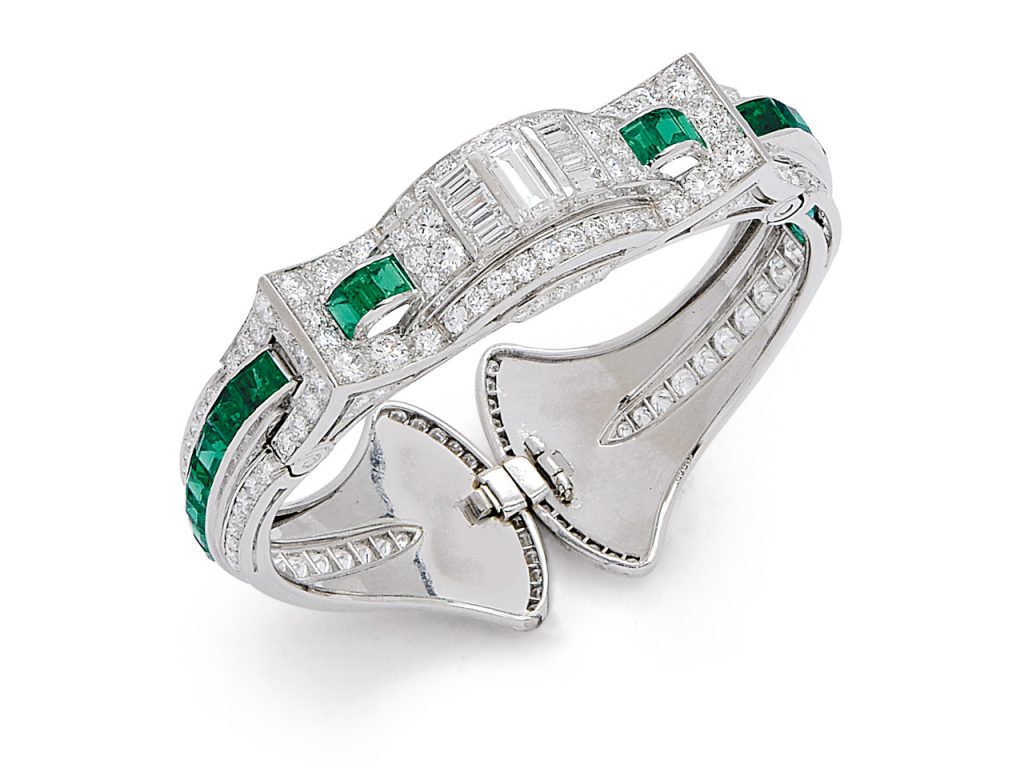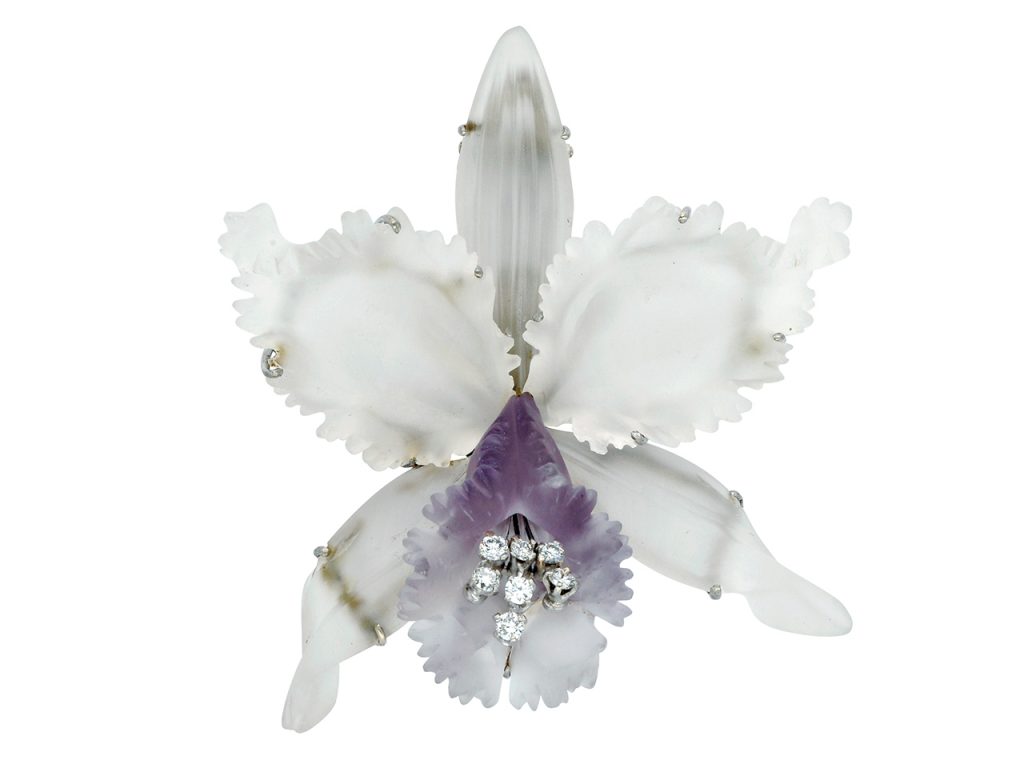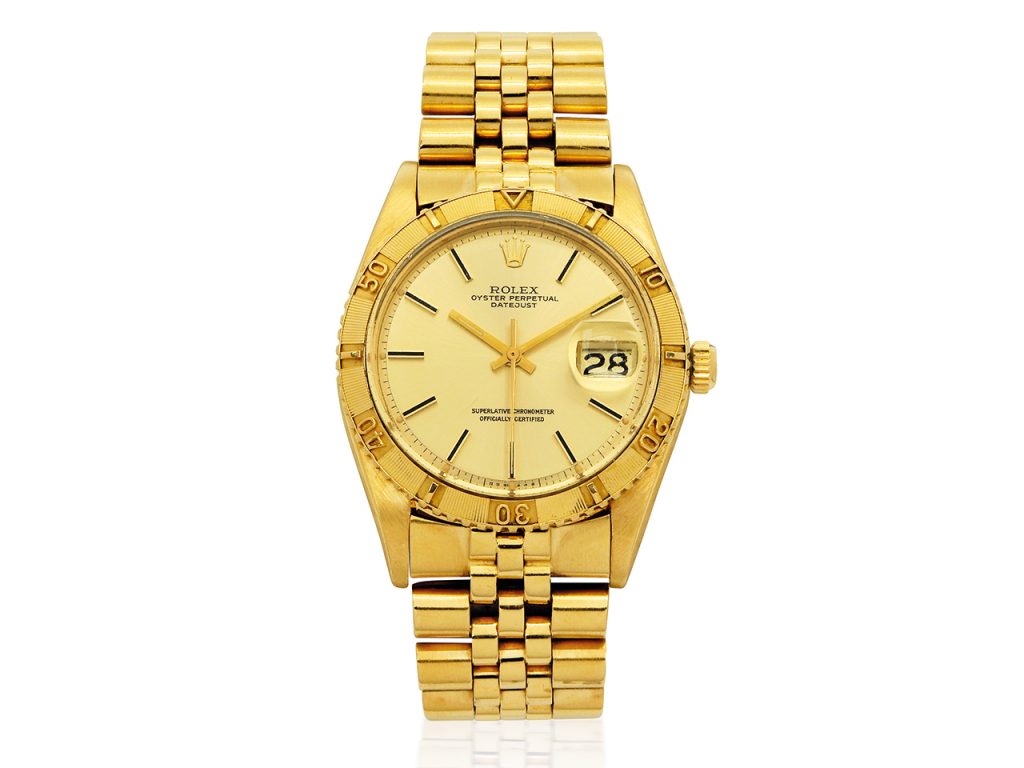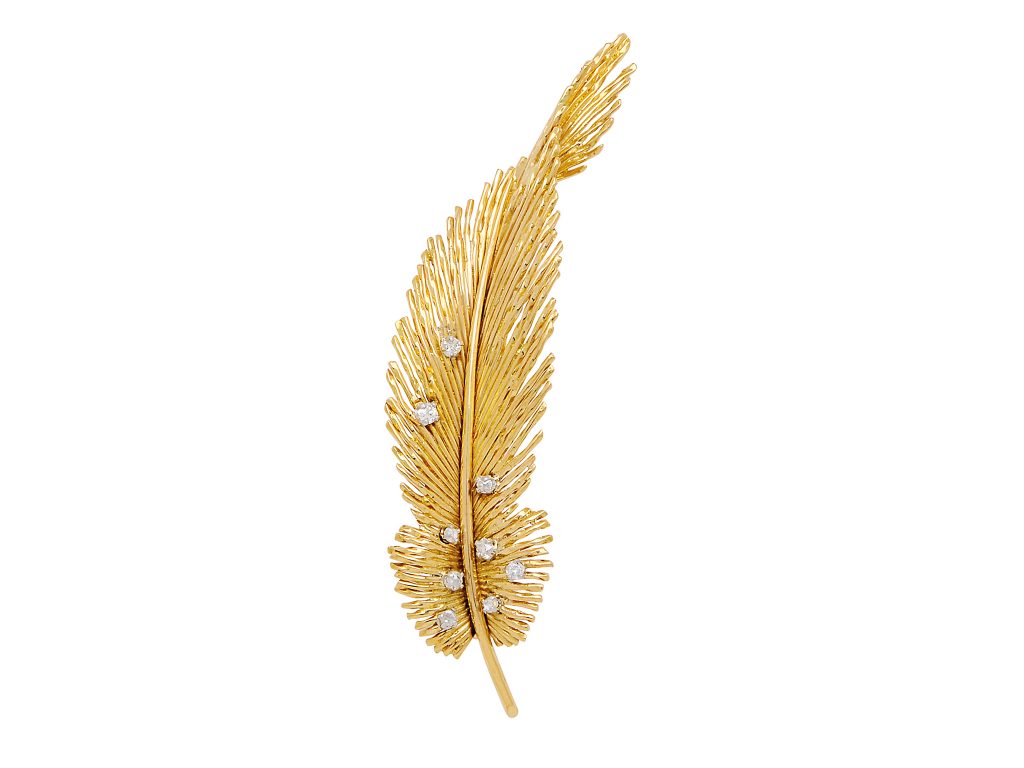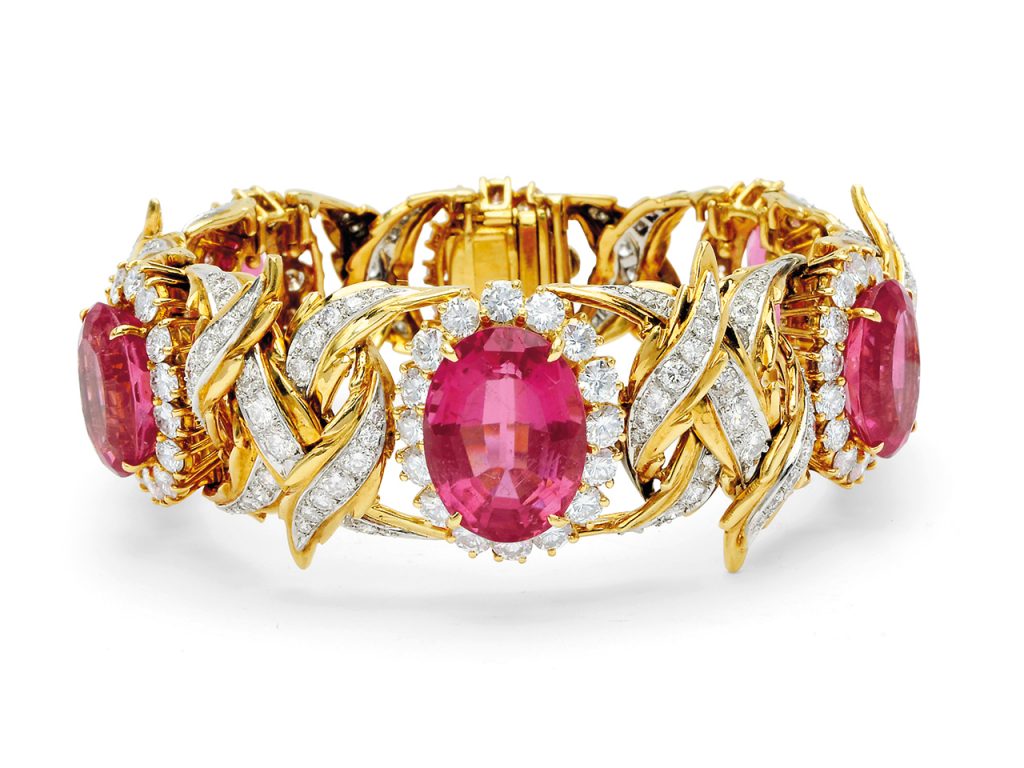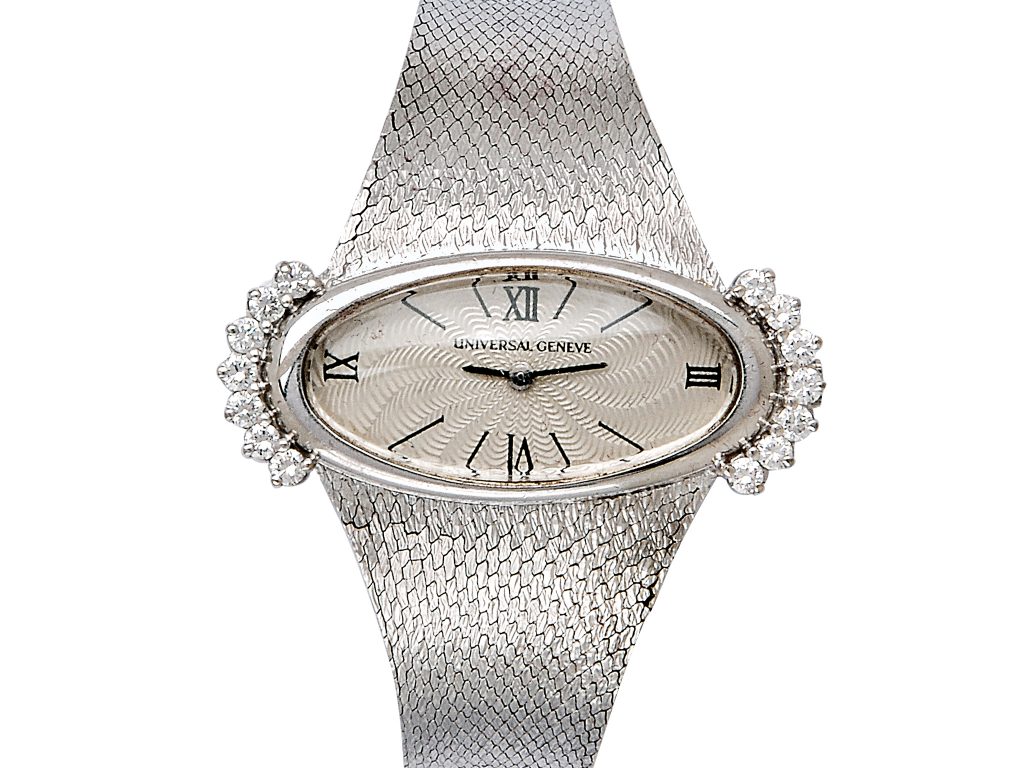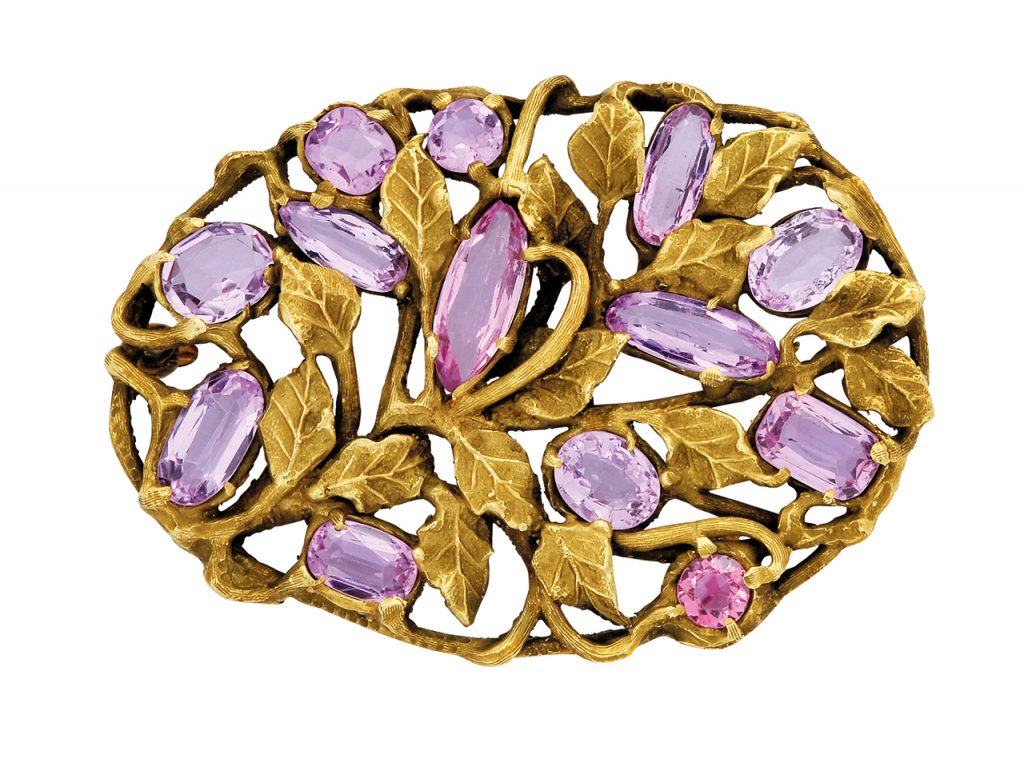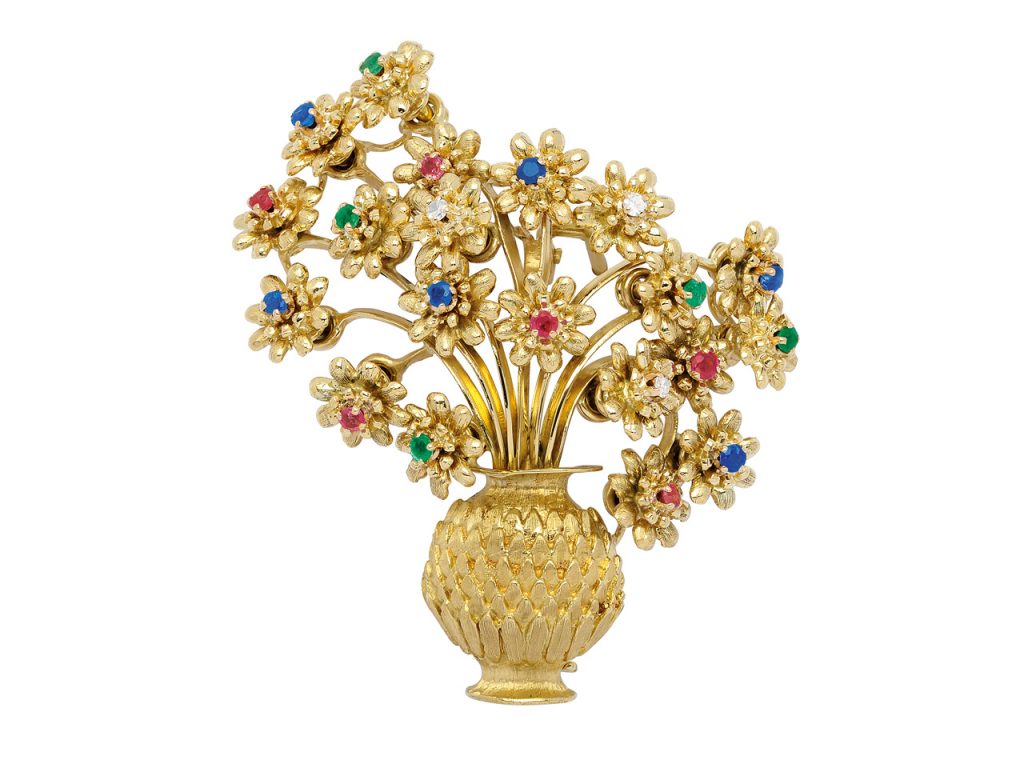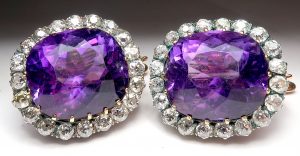
sold 2019, $36,000
The word “antique” usually refers to items that are at least one hundred years old.
Obviously, based on the definition, “antique” means that with each year’s passing, more recent items fit into that description. When Dupuis Fine Jewellery Auctioneers was founded by Ron Dupuis, a 100 year old “antique” jewel had to date from 1886 (when Britain’s Queen Victoria still had another 15 years left on the throne) or earlier. Today, an antique could date from the 1920s. In a few years, Art Deco items can begin to be classified as antique.
We adore jewels because they are lovely little treasures exuding beauty in design, craft, gems, and style. Jewels are also wonderful accessories, and tell a personal tale. An antique jewel has had so much time to build its story.
For an antique, the tale it tells can be so poignant. Imagine a brooch that was worn by a bride at her wedding in 2000, at the beginning of a new century, an exciting future ahead, and the same brooch was worn by her mother at her wedding, her grandmother, and her great grandmother, all at their weddings. The stories that brooch could tell…
Sometimes a jewel tells its own tale out loud. There may be stamps and marks that reveal information. A hallmark might be tracked to a particular country, city, date, and maker. These may be quite comprehensive, as seen in a British Hallmark, featuring a series of stamps that will provide all of this. Other stamps may be less detailed, but still provide some hints to a jewel’s story. A stamp for 15K gold, for example on a British gold jewel indicates that the jewel can only date from 1854-1932, not before and not after.
Mourning
Sometimes the engraving of a personal message will help a jewel to convey its message. The sad story of a family which lost a member, a jewel that commemorates the person, usually referred to a memorial jewellery.
Messages
Perhaps a happy occasion might be remembered, a jewel that commemorates an important event, such as the birth of a grandchild is common. In the nineteenth Century, brooches were commonly used to convey messages. Sometimes, gemstones were used to spell out a message: The initial letters of Ruby, Emerald, Garnet, Amethyst, Ruby, and Diamond spelled out the word “REGARD” in rings and pendants
Jewels may tell the story of a goal achieved, a threshold passed. The jewel itself may be a commemoration, but sometimes, more often in men’s rather than in women’s jewels, the jewel may clearly spell out the reason for the celebration. There is not nearly so much man’s jewellery as women’s jewellery. Perhaps because some shirt studs, cufflinks, and a pocket watch were just about all that grandfather had by way of jewels, they are often very precious in a family. A pocket watch was often a special presentation gift, and is frequently engraved with a monogram, and sometimes with a note to carry the story into the future: “On your graduation”, “to celebrate 25 years of service”, “on our golden wedding anniversary”, and so on.
When an antique jewel is purchased at auction, it begins a new branch of its journey. The story never ends, it just receives new chapters with each new owner.

